Our Blog - Perpignan
We were talking with our friend Pam a few weeks back and she mentioned that SNCF (the train company) was having an on-going promotion where a set of tickets were available for 1 euro each way per person. So we looked through a couple different options and found that we could go out-and-back to Perpignan for 4 euros round-trip. The trip gave us about a day and a half in Perpignan and based on what we would want to see, I thought it was enough time (and I ended up being correct!). We had been to Perpignan before, in 2010, but Tom and I both thought that we had only stopped for lunch. Then we looked at our blog from back then and in fact, we saw quite a bit more than that. We were able to see a couple things this trip that we weren't able to see last time, so that was a good thing.
Perpignan between Barcelona (to the South) and Montpellier (to the North). While it isn't actually ON the water, it isn't too far away from it. Unlike many of my "history of the city" sections, this one will not start with Roman times. In fact, the oldest remains found only date back to the 9th century while the first mention of the city was in 927. It grew in the 11th and 12th centuries, including having various churches built. It then fell under control of the Kingdom of Majorca and had a huge growth spurt, quadrupling in less than a century. It then went to France when it was captured by the armies of Louis XIII in 1642 and officially with the treaty of the Pyrenees in 1659.
Trivia note: Perpignan is home to the largest Gypsy community in France, about 10,000 people.
Our train arrived in the early afternoon and after checking into our hotel, we headed to the historical center of town. Perpignan was a walled city, like many in the middle ages. When the walls were torn down, the city was able to expand with new neighborhoods. One of the places where the old town meets the new neighborhood is at Place Arago. On one side of the Place is the Palais du Justice (opened in 1866) and on the other is a small square with a state of François Arago. He was an astronomer, physicist, and French statesman.
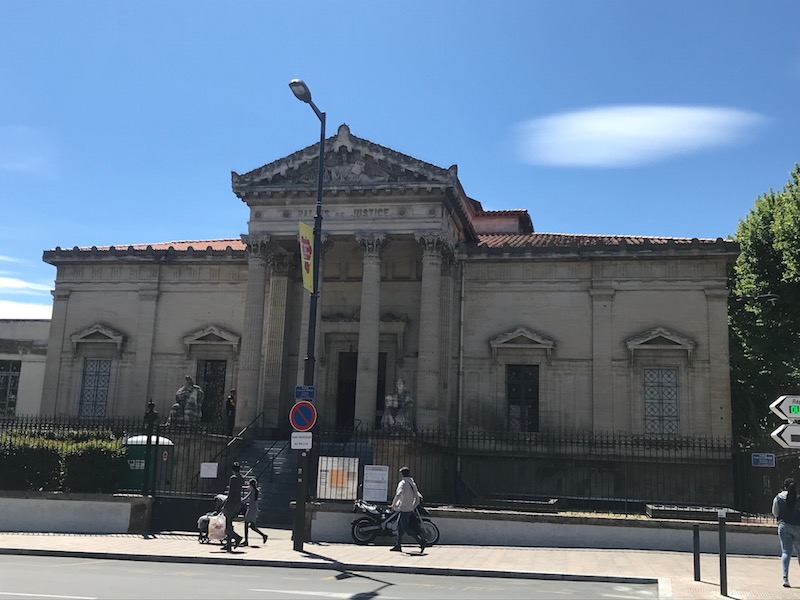
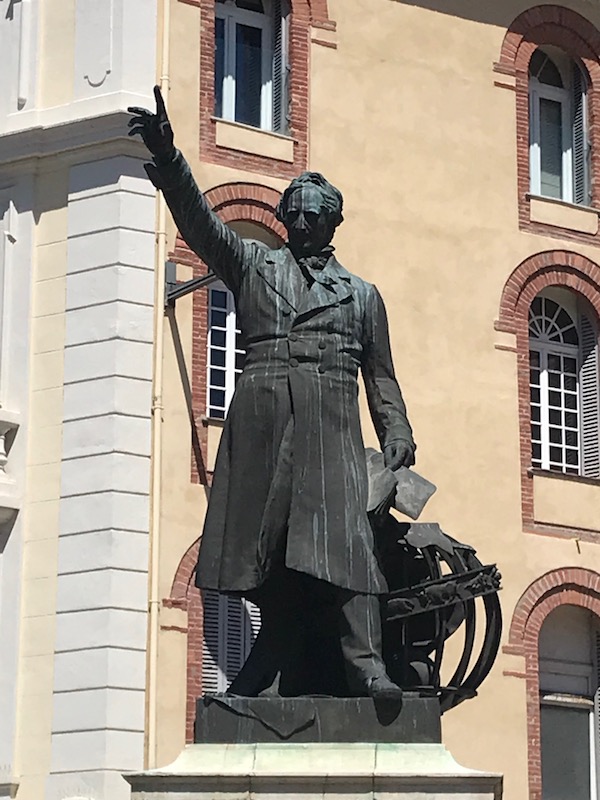
The next 3 buildings are next to each other and on a fairly narrow road, so it was a bit difficult to get a good picture. The first is the Palace of Deputation, which was built in the second half of the 15th century. It is an example of Argonese architecture with trefoil windows and pure symmetry.
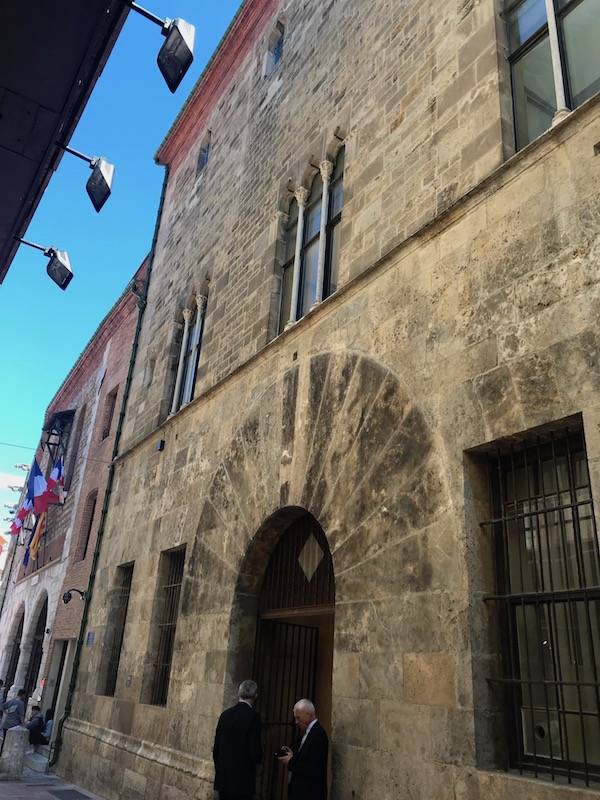

Next is the Hotel de Ville, which was originally built as the Consuls' house in 1318 and then expanded in the 16th and 17th centuries. The façade is an example of Catalan architecture, using both stones and bricks.
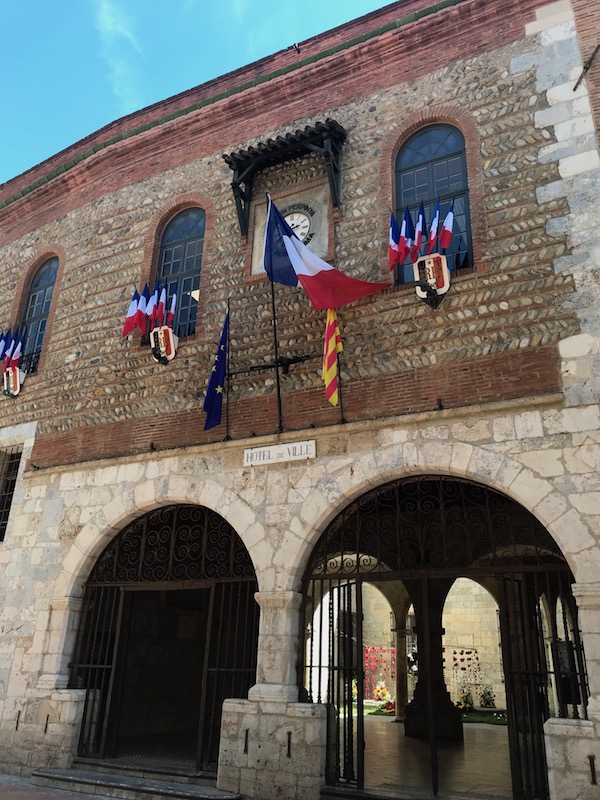
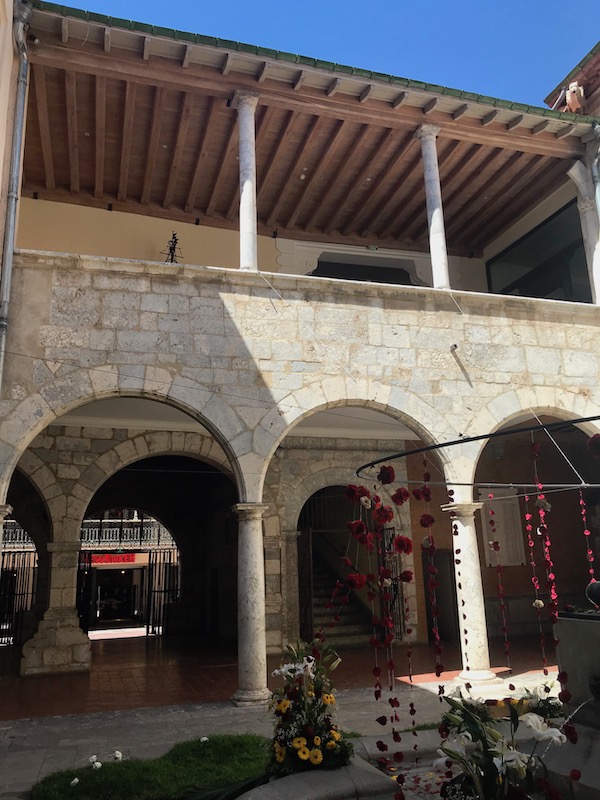
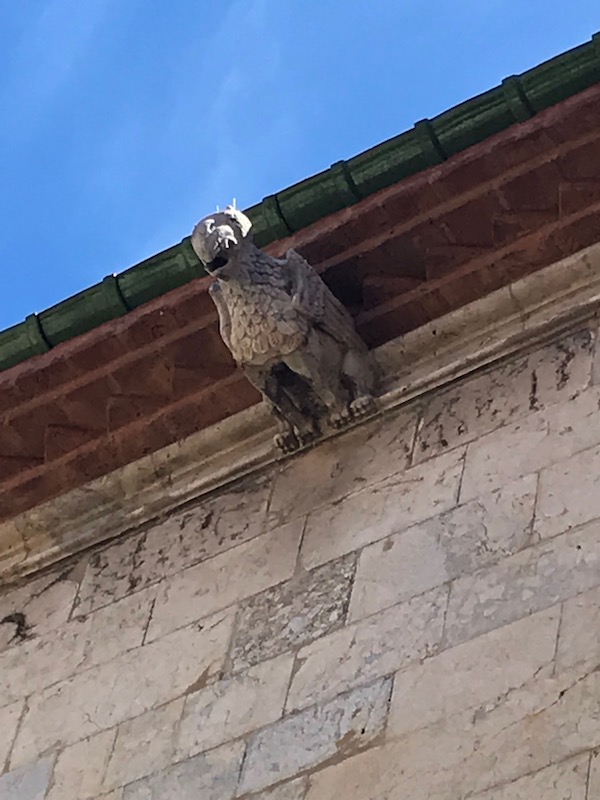
The Loge de Mer was the original location of the maritime courts, created in 1388. The original building was based on the model of the lodges of the Catalan-Aragonese kingdom but then rebuilt and enlarged in the 16th century. It has really intricate window frames, especially on the top floor.
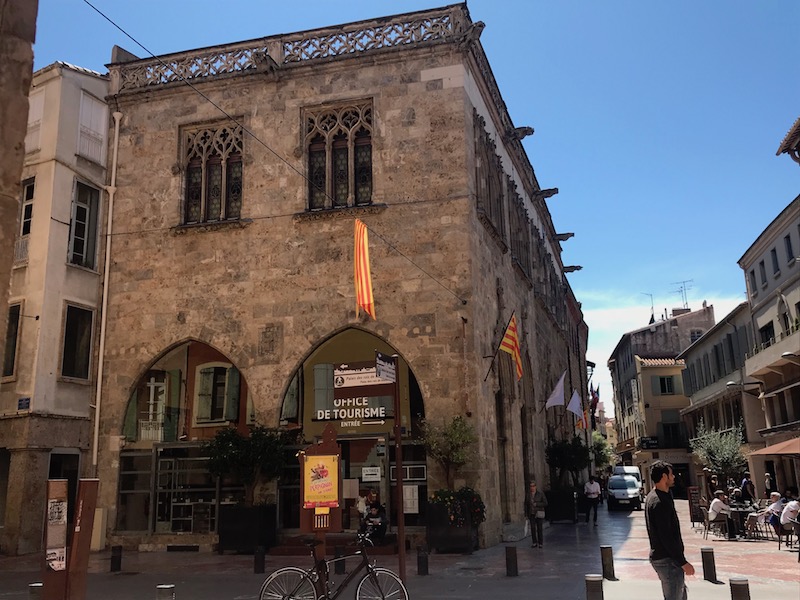

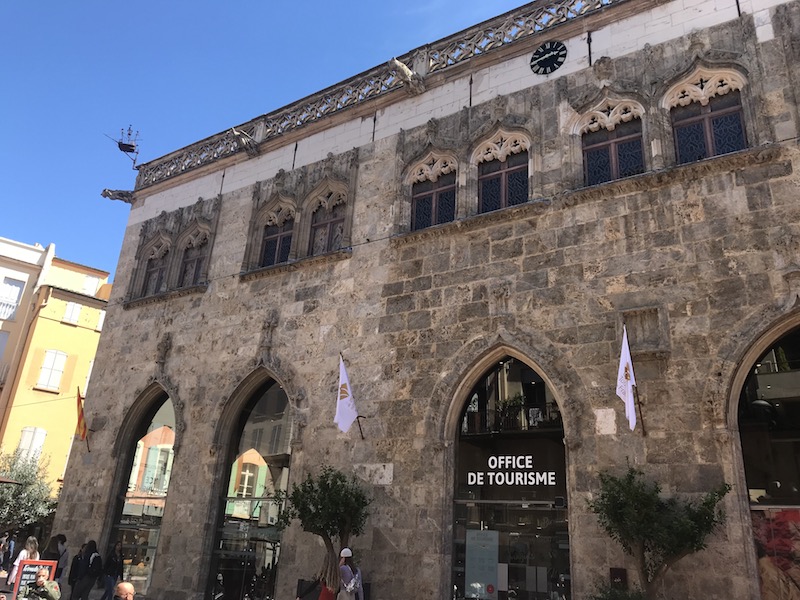
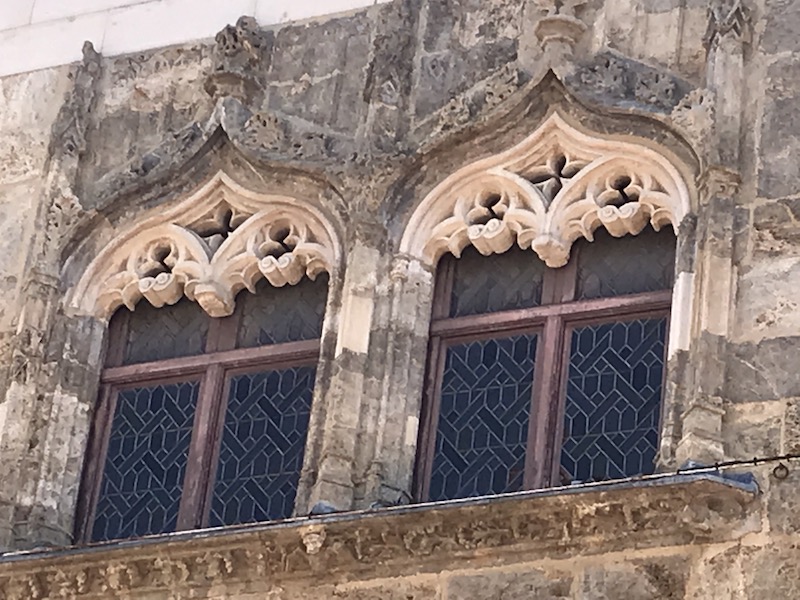

The Castillet is the emblematic monument of the city and dates to the last part of the 14th century. The massive building was the defensive gate within the city walls that protected the city from any type of offensive coming from the North. By the time of Louis XIth, it lost usefulness since there would be no offensive coming from France (as they were part of France) and it was changed into a prison. At that time, the smaller Notre Dame door was added. While most of the city walls were demolished in 1904, the Castillet remained. Supposedly the rounded shape of the walls was designed to deflect weapons that were shot at it.

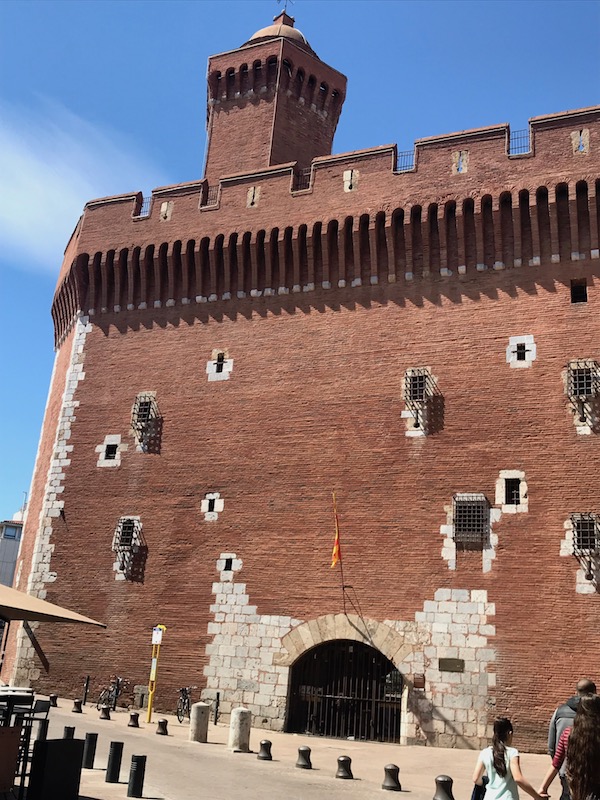
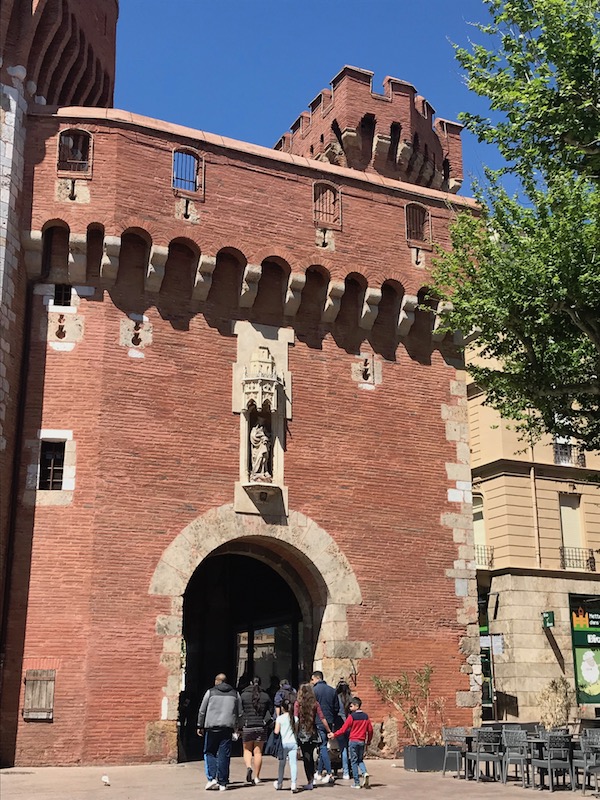
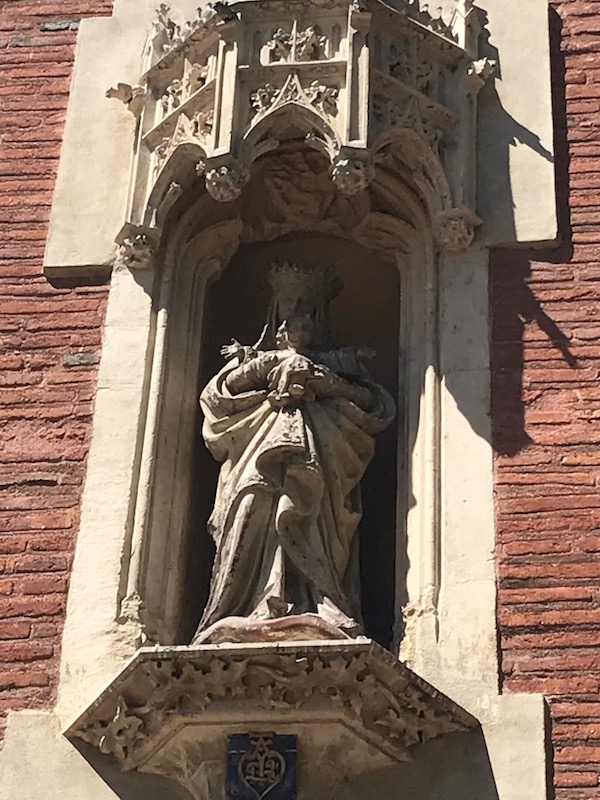
The Cathedral Saint-Jean was started in 1324 and was built in the Catalan Gothic style, because of its association with the Kingdom of Majorca. The façade features a portico and clock-tower, which date from the 18th century. Inside, you can see the high gothic arches with a large nave and side chapels.
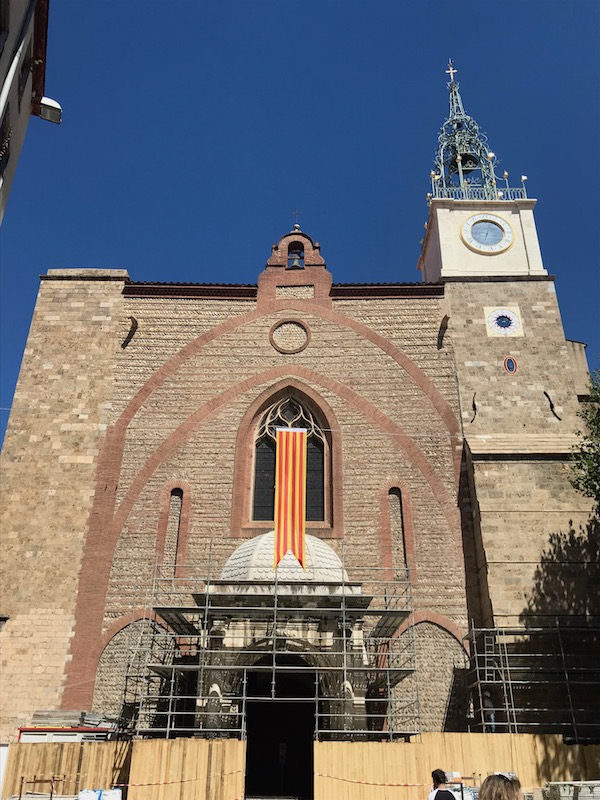
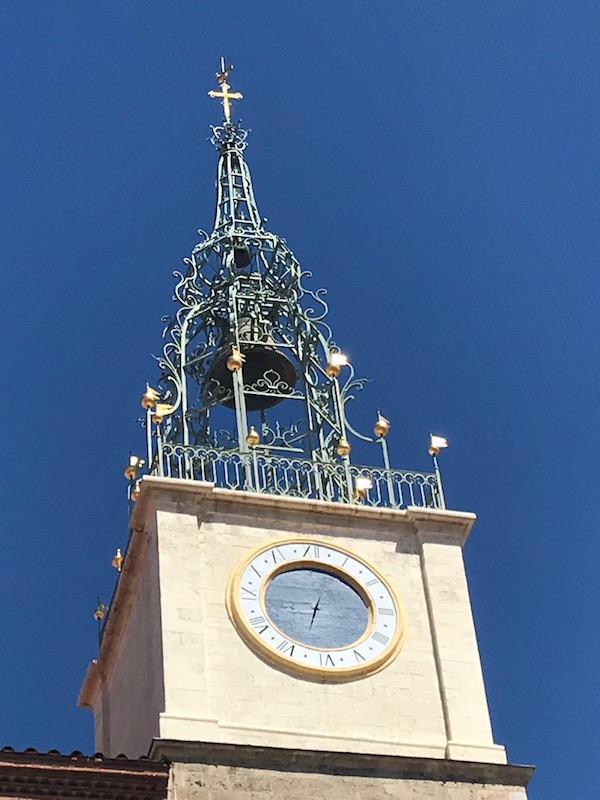
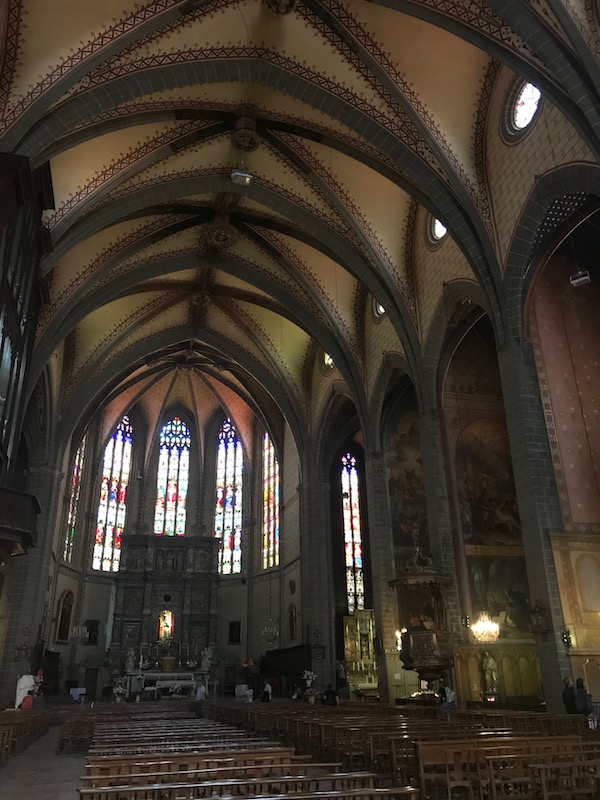
Each chapel had its' own look with stained glass windows and (normally) highly decorated altars. The first one is the Chapel of Saint Francis of Paule, who is popular in Perpignan because he supposedly ended the plague that ravaged the city in 1632 and, therefore, was proclaimed protector of the city. Then I have pictures of a couple other stained glass windows.

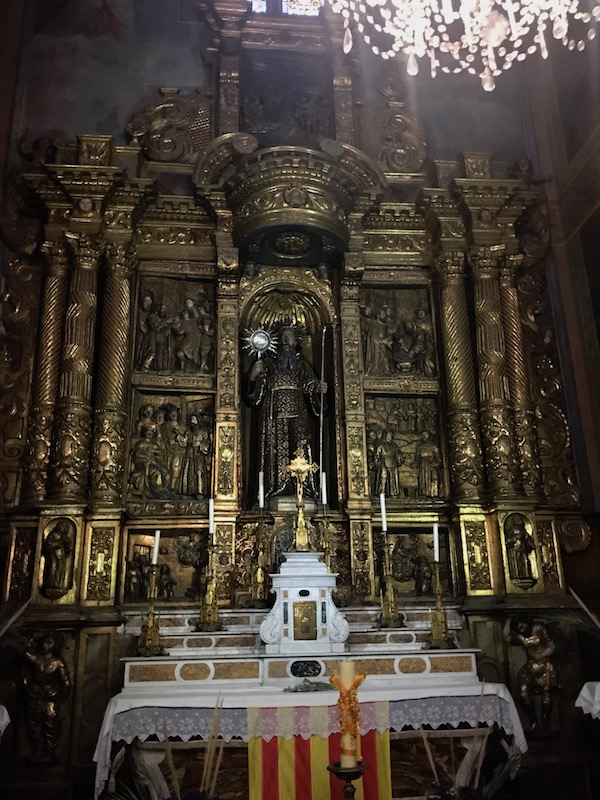
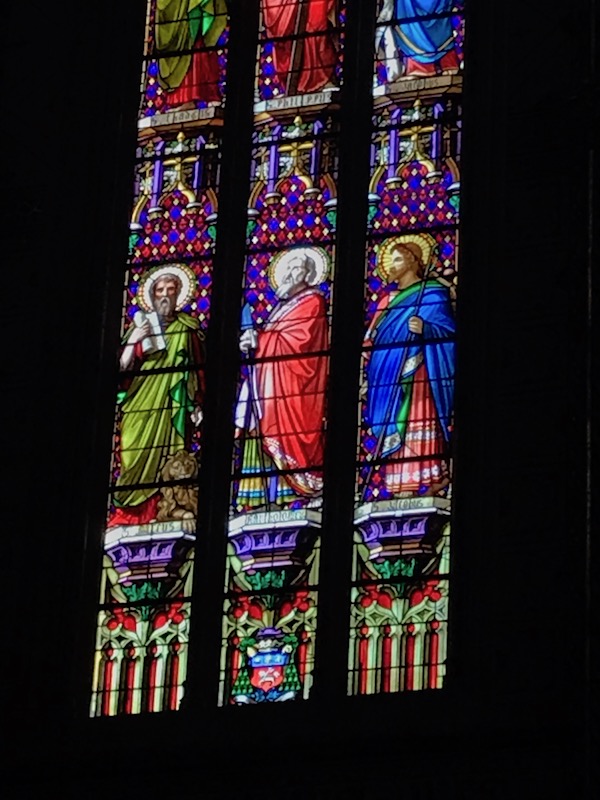

The baptismal font is carved from a single piece of white marble and can be dated to the end of the 11th century or beginning of the 12th century. It is huge due to the fact that, at that time, it was common practice to baptize adults by immersing them in the baptismal font.
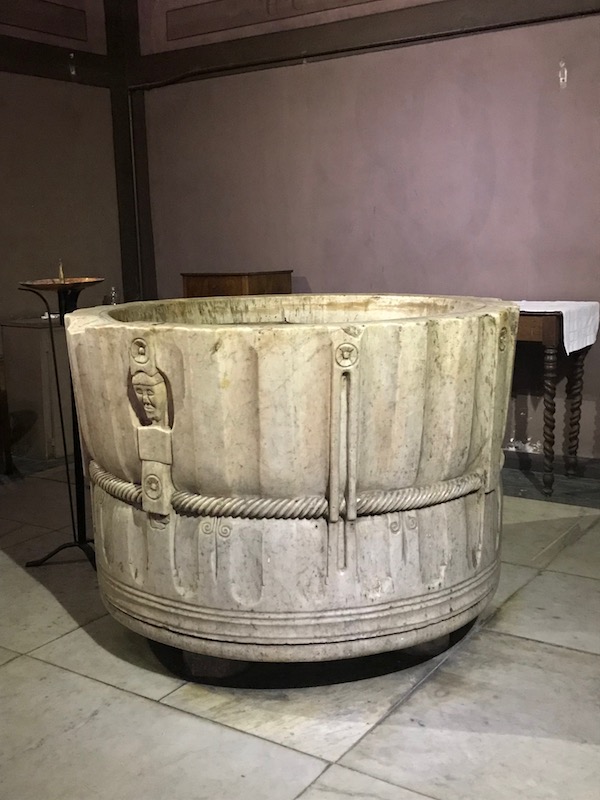
Attached to the south side of the building, Campo Santo (or St. John's cloister) was the funerary cloister of the cathedral. It is also the oldest building of this type remaining in France, dating to the first half of the 14th century. Around the cloister, you can see gothic-style funeral recesses that show the coats of arms of the rich families of Perpignan.
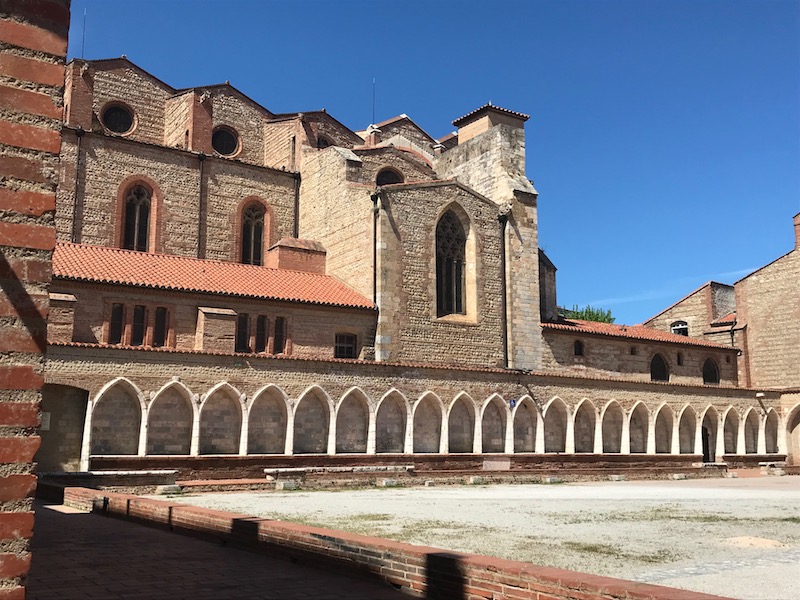
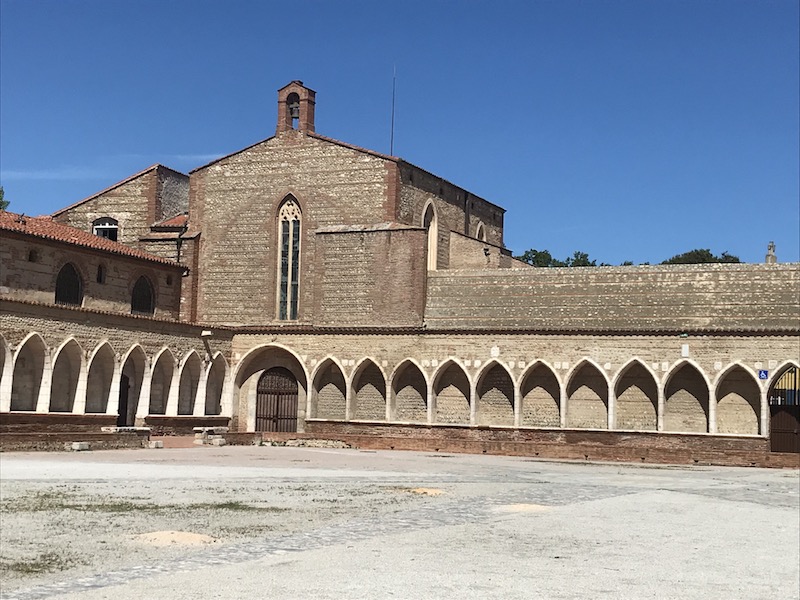
Definitely defensive walls with the arrow slits at the bottom.
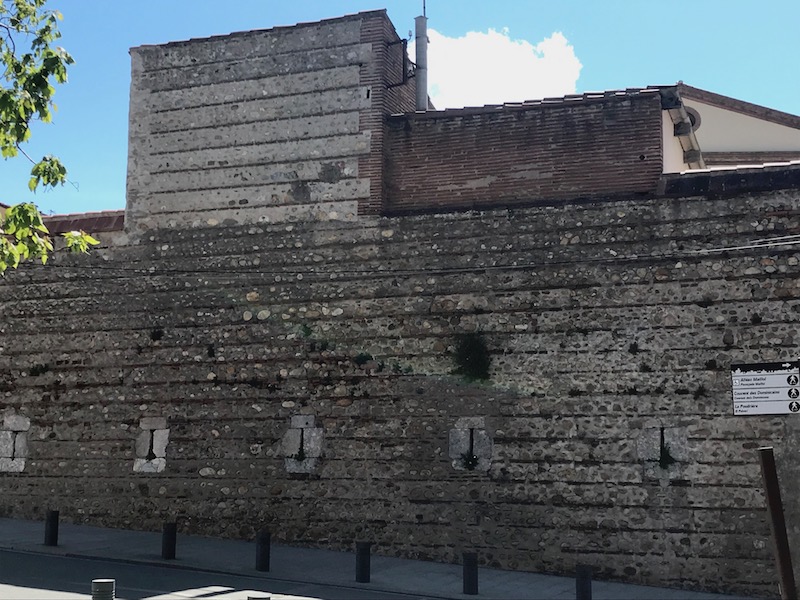
This is an example of the type of neo-Catalan architecture that is seen around town. This was the home of the Mitjaville company, which owned the largest wine tank-wagons in France in the 1920's. You can see that it uses brick, stone, and pebble for the exterior walls (the pebbles are only used for decorative elements here) and then also wrought iron balconies.
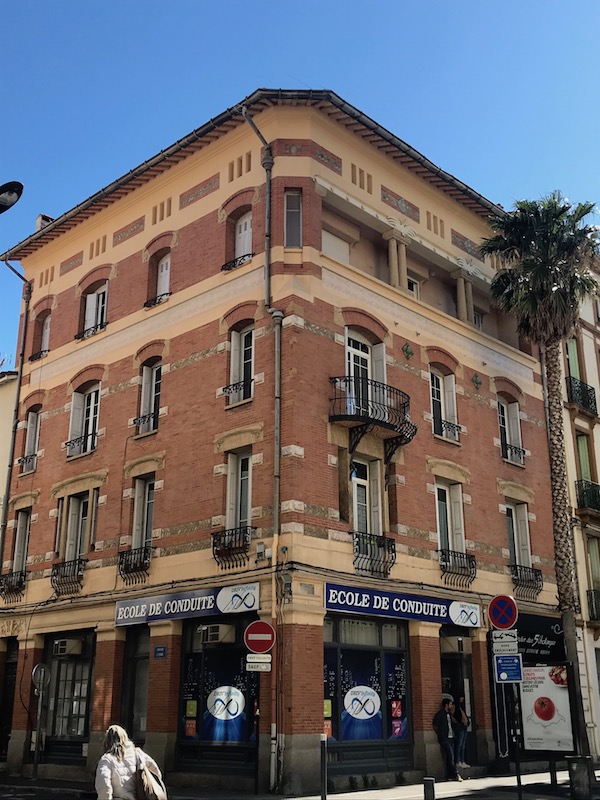
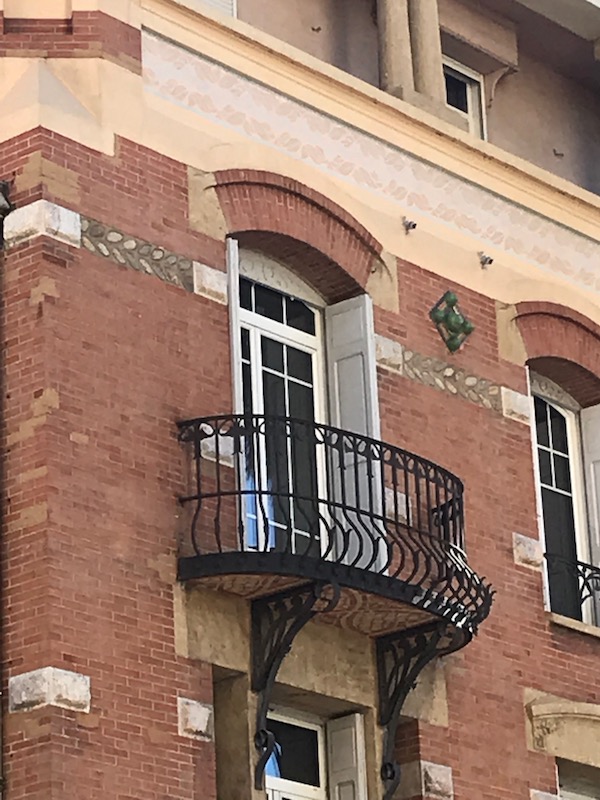
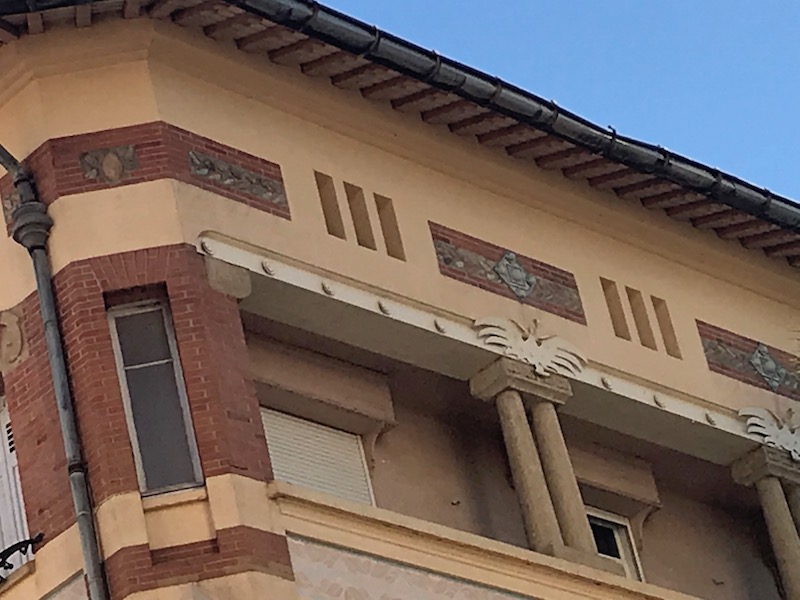
Palace of the Kings of Mallorca was not open the last time were in Perpignan but is now open every day of the week. It’s one of the most remarkable examples of the medieval civil and military architecture in Southern France. This imposing citadel symbolizes the golden age of the city when it was the capital of the kingdom of Mallorca in the 13th and 14th centuries. It is a fortified Gothic-style Palace in the Gothic style. As you walk up to it, the massive size of the fortifications is quite impressive! In the last picture here, you can see the the characteristic 'star-shape' bastion fort design that is typical of French fort/citadel design of Sébastien Le Prestre de Vauban.
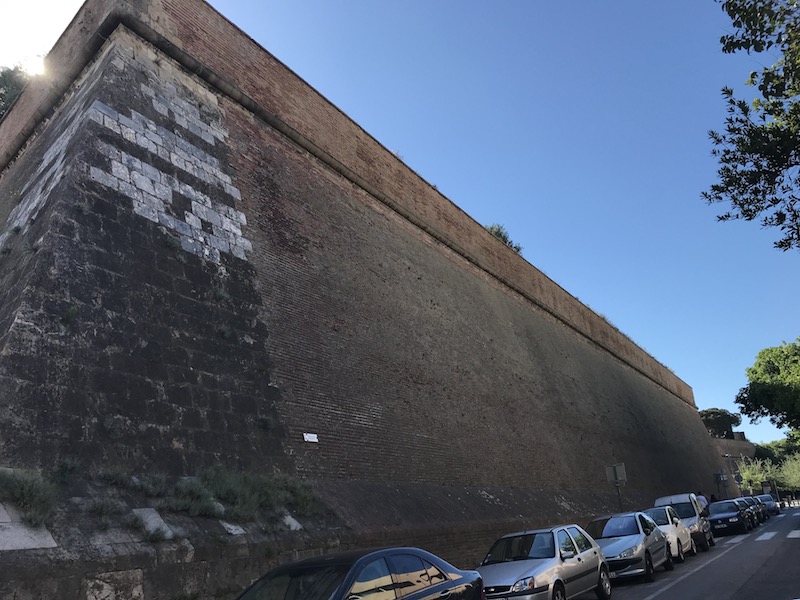
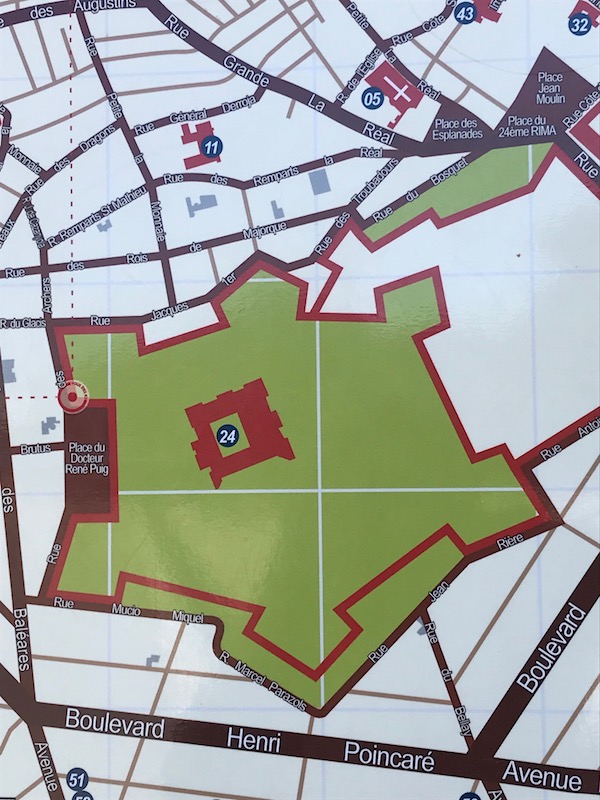

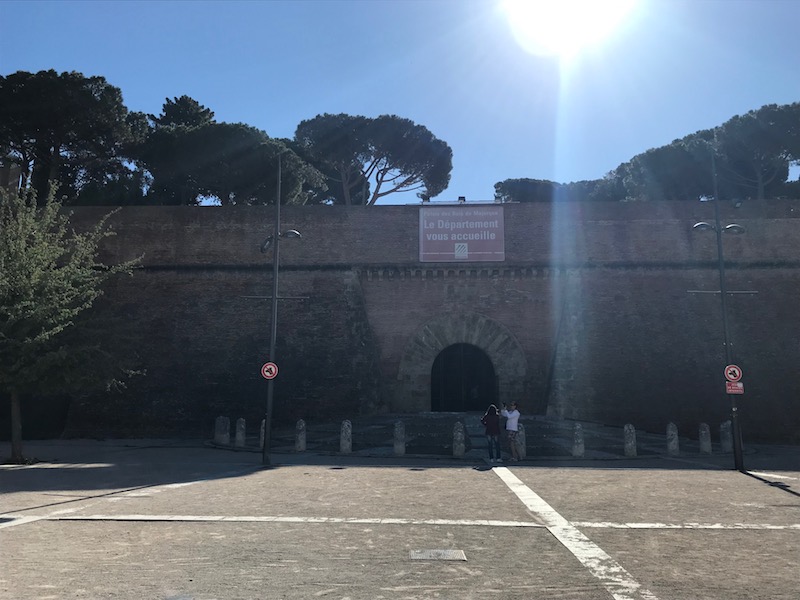
As you enter the main gate, you are met with a fountain that seems to be a guy tending to his bulls, and then a bunch of steps that weave up to the top, where it then opens up to a huge garden area, along with the palace. From that location, up high above the city, you can get a nice view of the star-shaped bastions, as well as the snow-capped mountains in the distance. I think that this is Canigou, which is in the Pyrenees and is a bit over 9,000 feet tall.

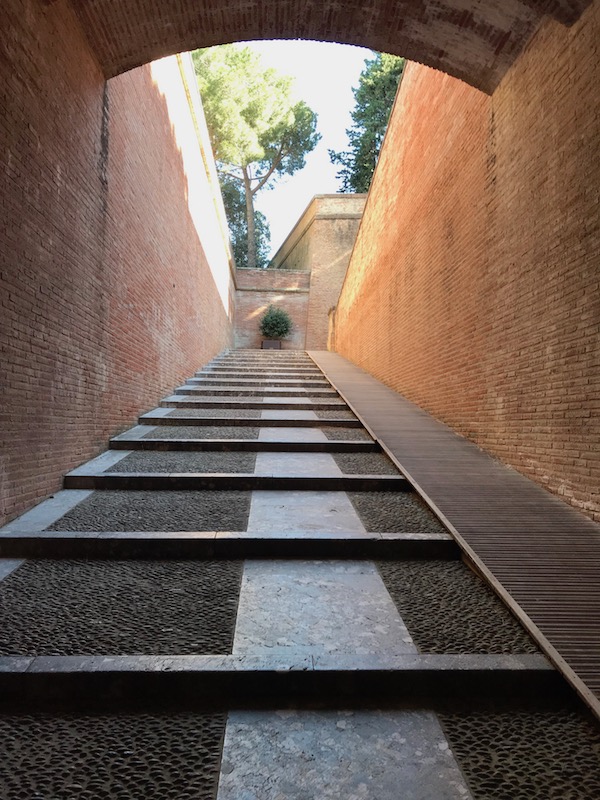
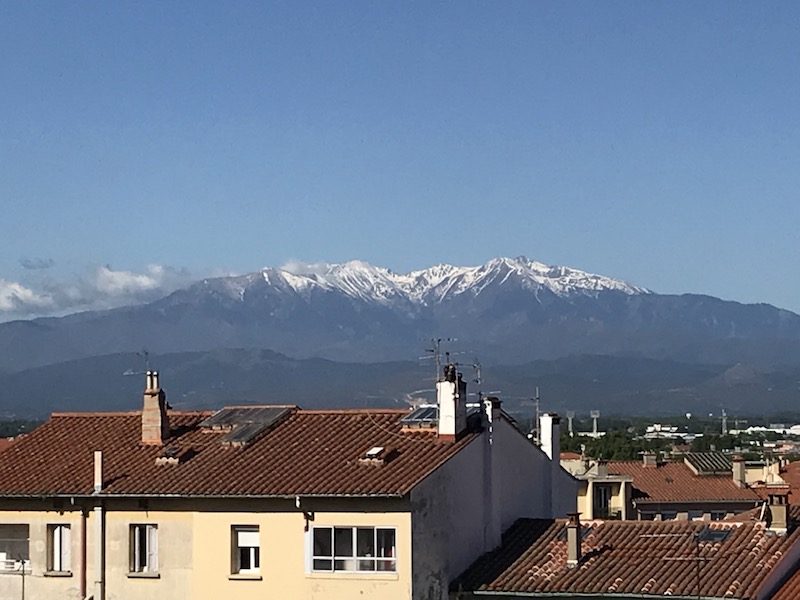
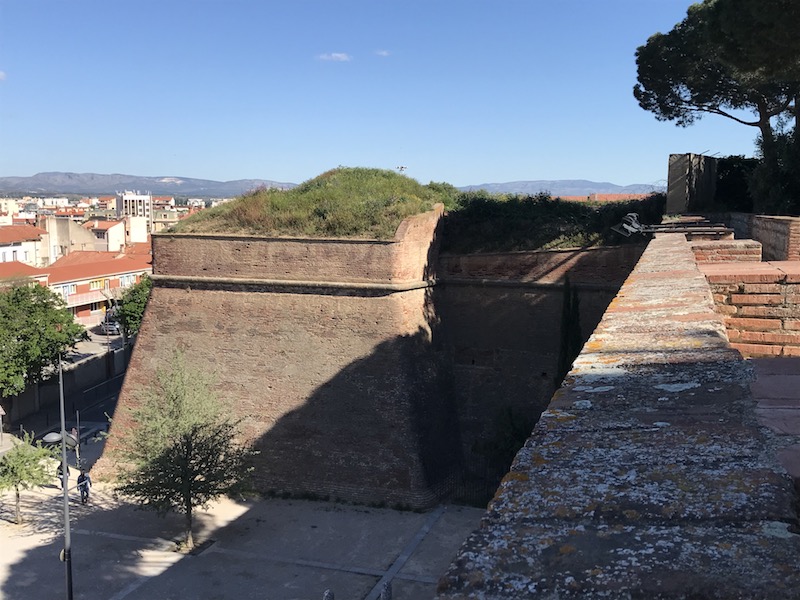
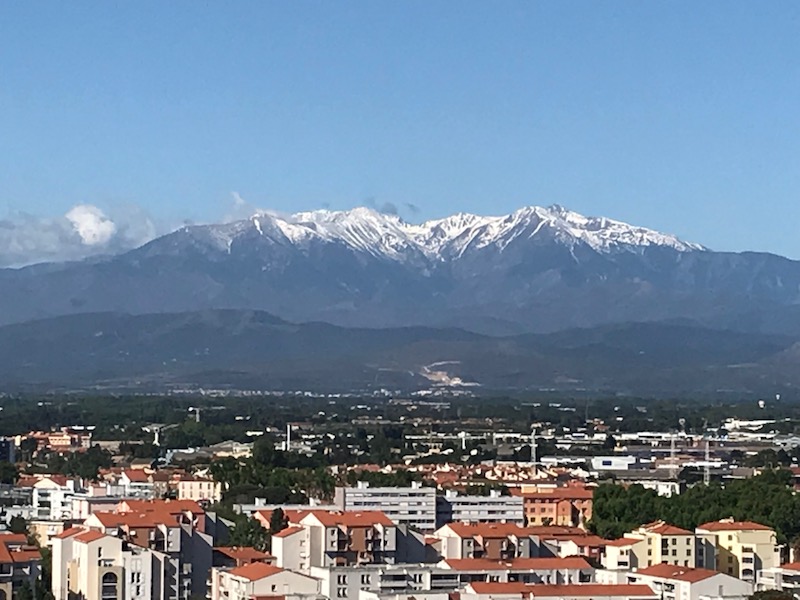
It is high enough that you also get nice views of the city. The first picture, you can see the cathedral in the middle (you can make out the white clock tower), the second shows Église Saint-Jacques while in the third picture, the large white area is actually a vast cemetery called the Cimetière de l'Ouest (Cemetery of the West).

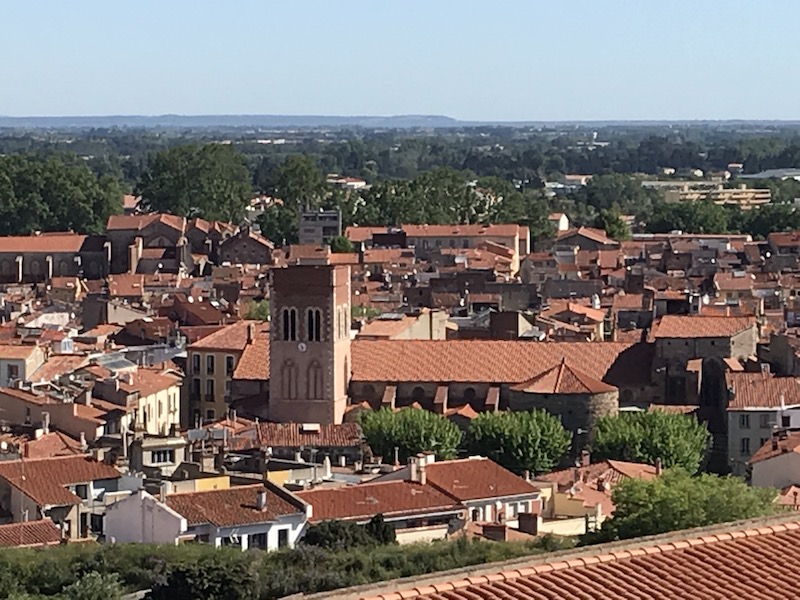

The palace itself was fortified even before the star-shaped bastions were added, as you can see from the moat that is still visible (now with grass instead of water).
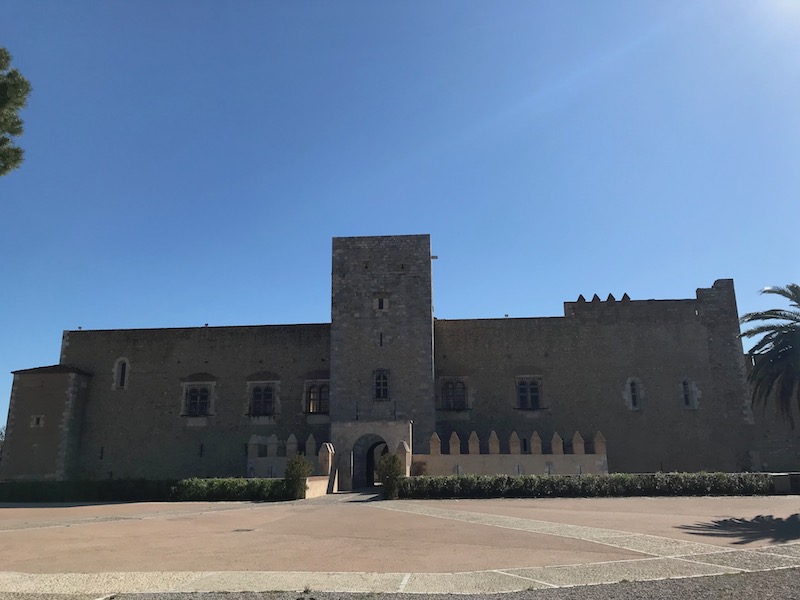

The Palace was built at the end of the 13th century to welcome the King of Mallorca and his court. It is built around a central courtyard
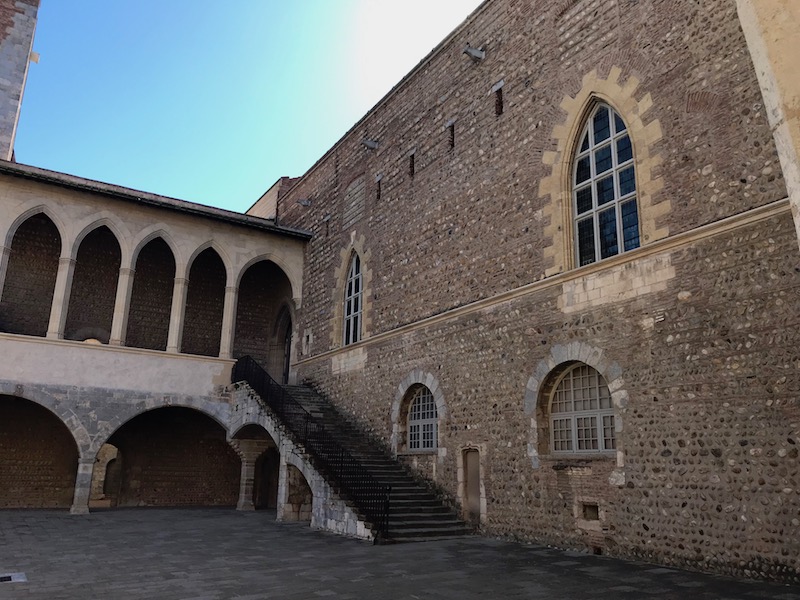
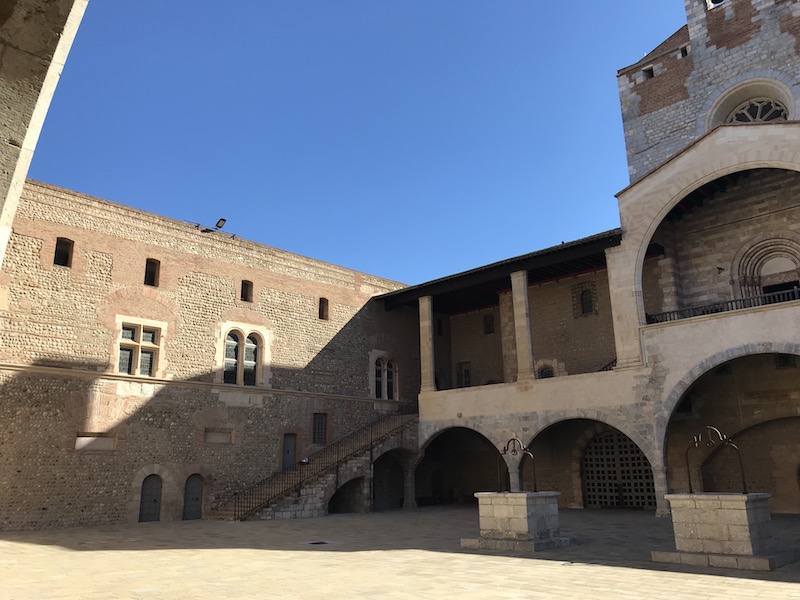
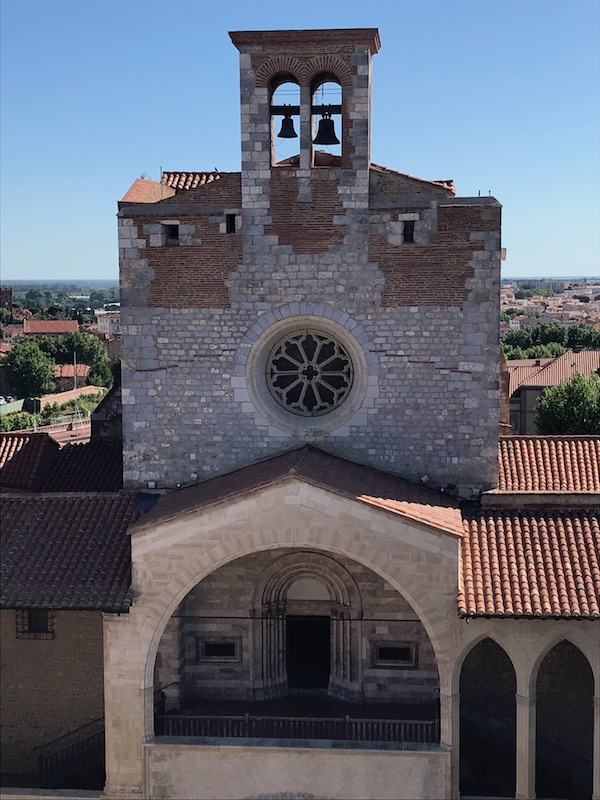
Tom thought this would be a great table for our dining room, except that it wouldn't fit in it! The 2nd picture (I hope) gives a good view of how the palace was built. A combination of bricks and river stones put together to make the walls, that were then plastered over and painted. This is also quite typical in Toulouse, where you see quite a few buildings with these river stones that came from the Garonne River.


The Great Salon, also in the typical southern Gothic style, hosted banquets, royal councils and parliaments. All of the windows have what looked like seats on the sides and I was quite impressed with all of the different colors in the window panes.
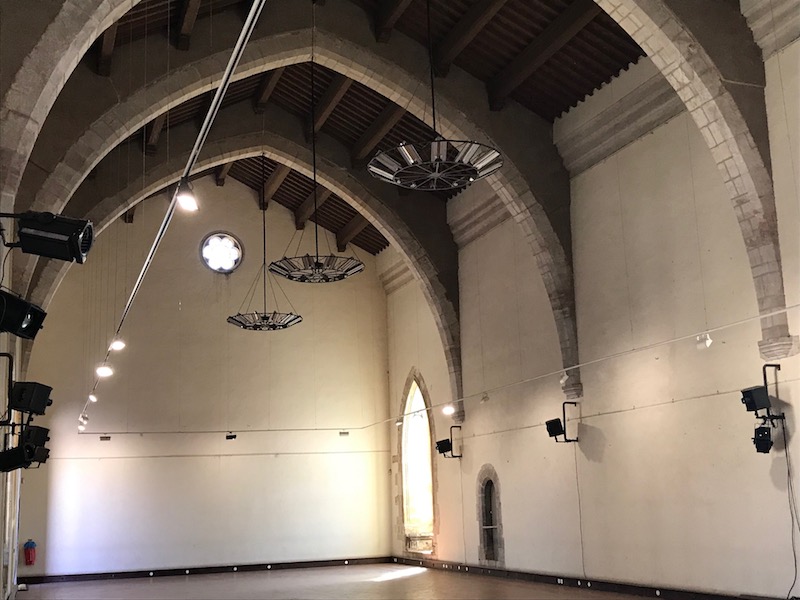
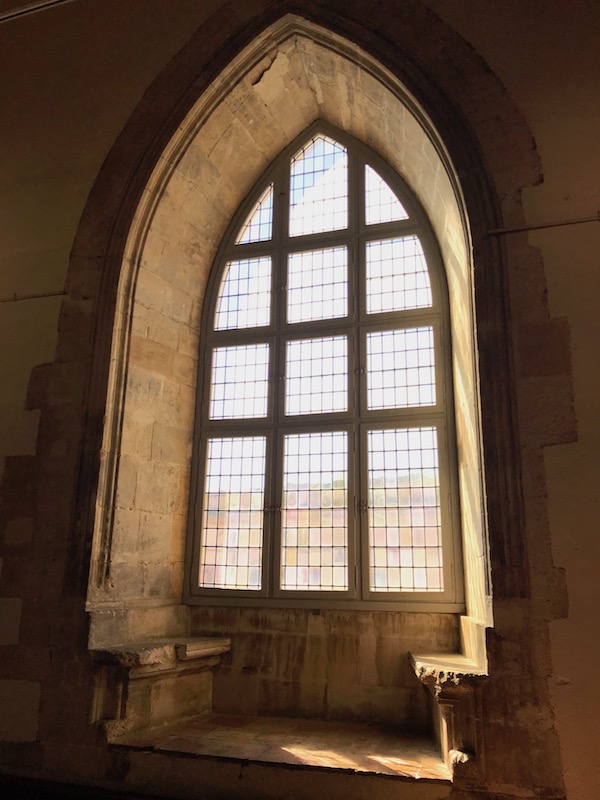

It is always good to be the King, as you can have your own high chapel. The entryway has a marble facade with a semicircular portal and a Mudejar-style door. Inside, the keystones and the cul-de-sacs are adorned with saints and angels. You can still see a bit of what I assume is the original decoration, including a frieze inspired by Arabic calligraphy and some interesting colors in the "fake" shell-shaped alcoves on either side of the main altar.
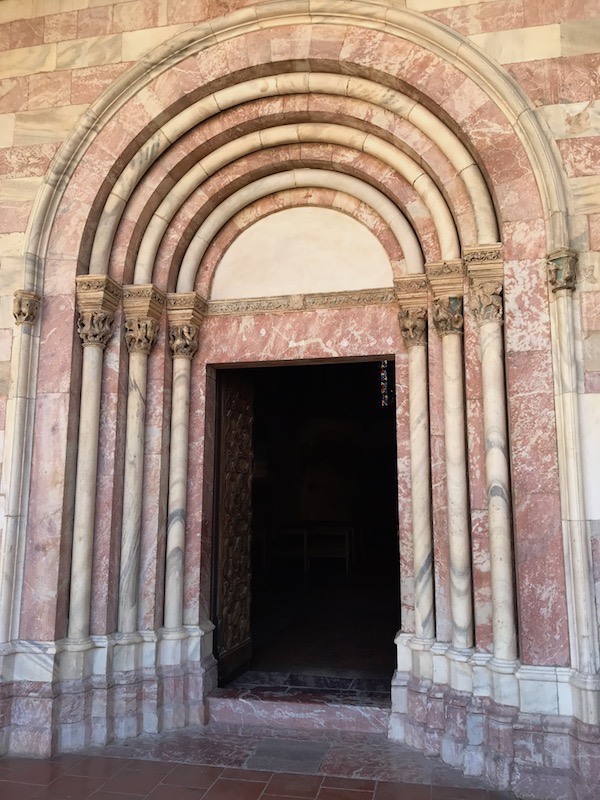
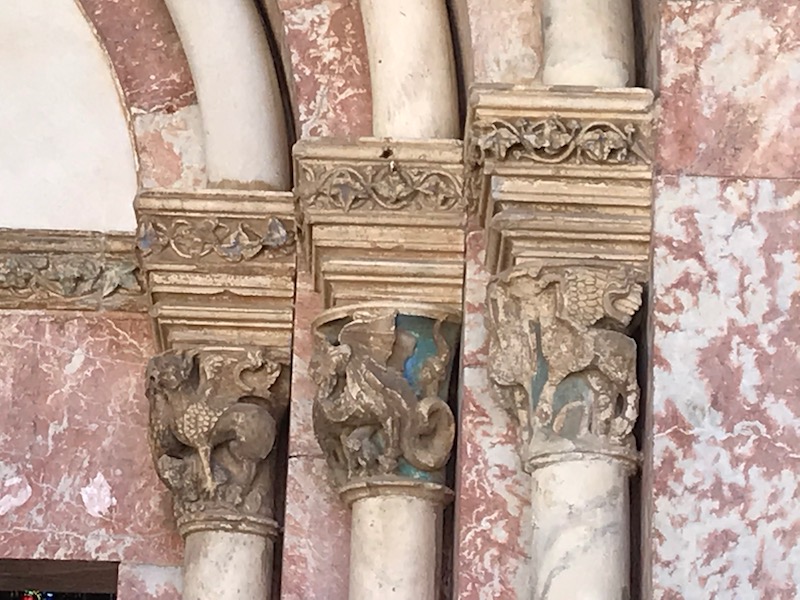
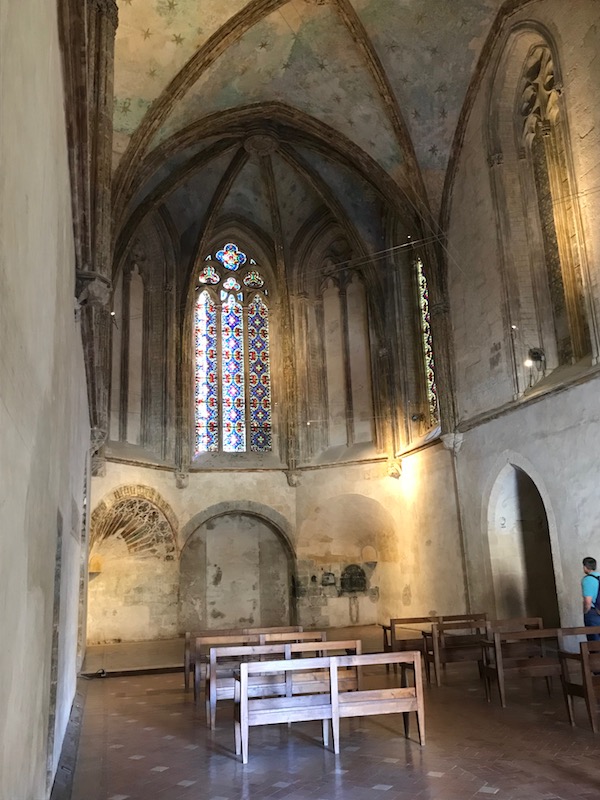

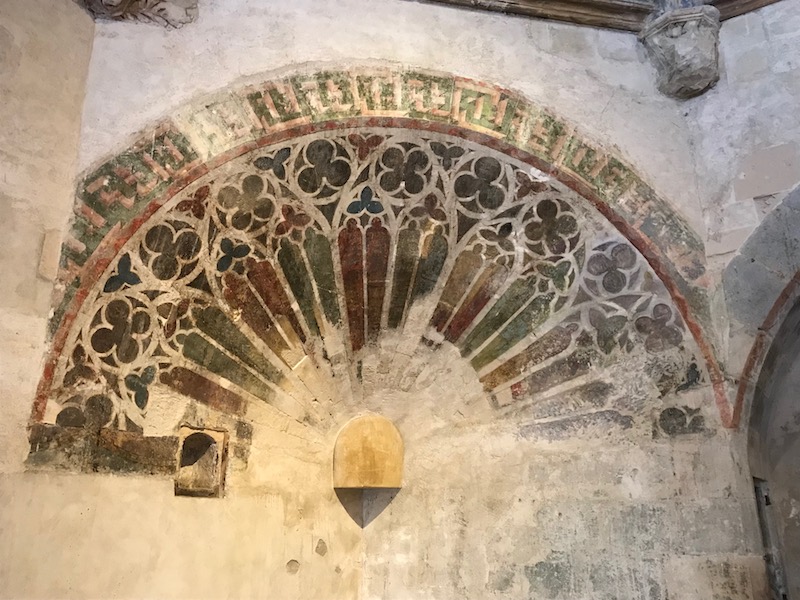
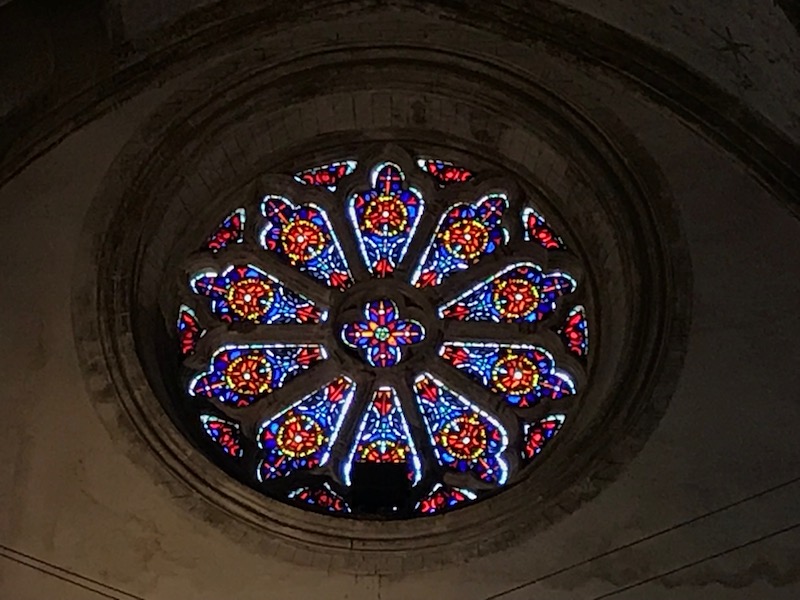

Below the high chapel is a lower chapel called the Chapel of Saint Madeleine. A few nice stained-glass windows as well as having a bit of decor that is a bit more Greek/Mediterranean than the Hispano-Moorish inspiration of the high chapel. Supposedly, the high chapel was reserved for the king and the great celebrations while the lower chapel was for the queen.
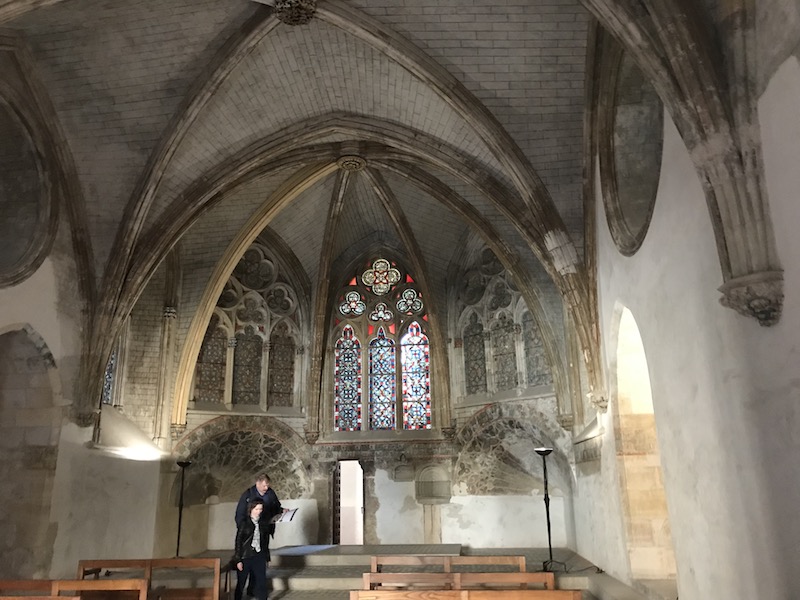
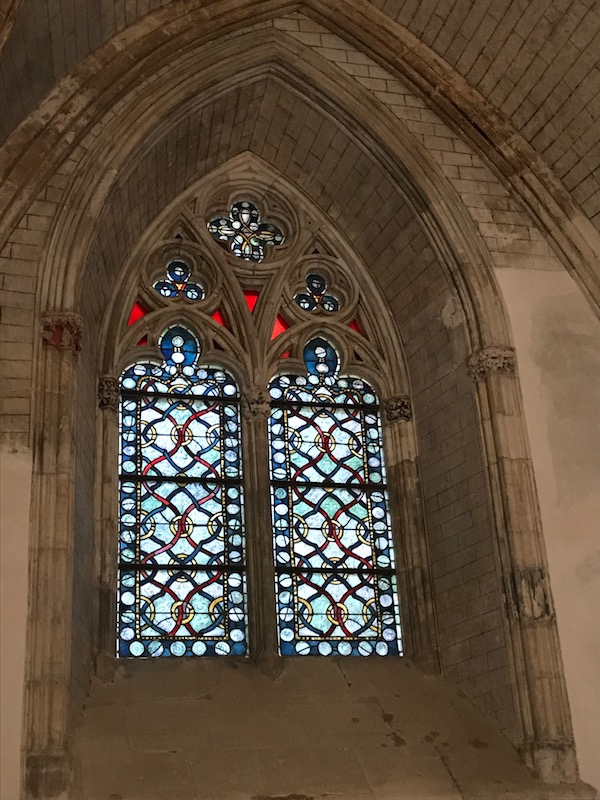
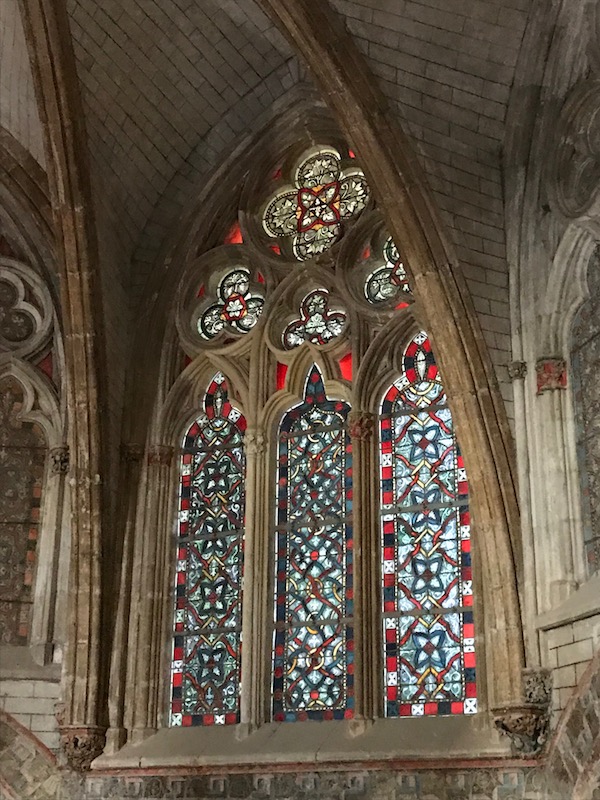
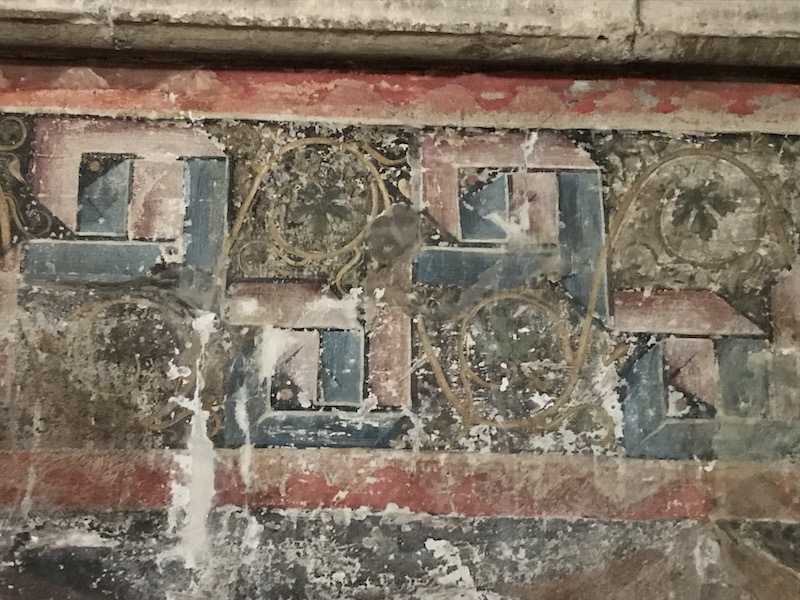
There are several war memorials (Monument aux Morts) in Perpignan, and this one is specifically the war memorial of 1870-1871. It was erected in 1895 and honors those from the Pyren-Orient department that died during the Franco-Prussian war. On the top, the bronze statue evokes "peace armed", the sword signifying vigilance or revenge, rather than a victory since France lost the war.
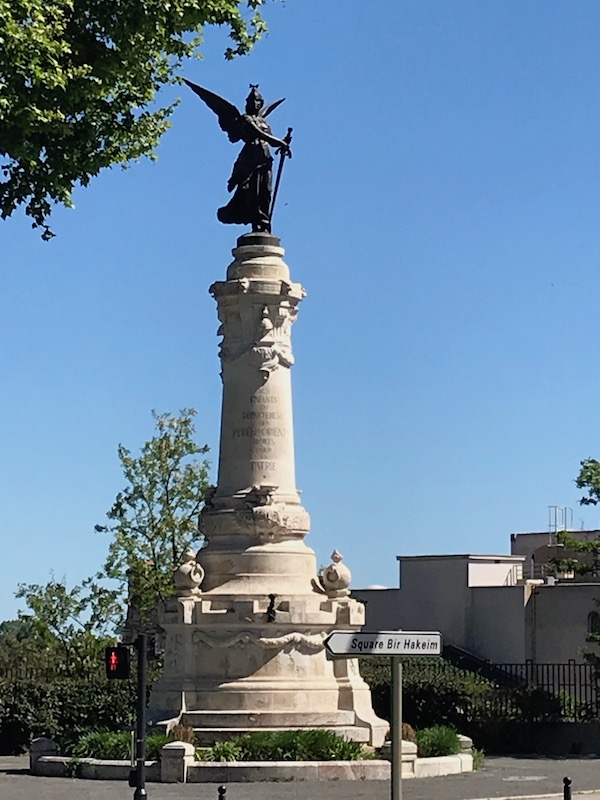
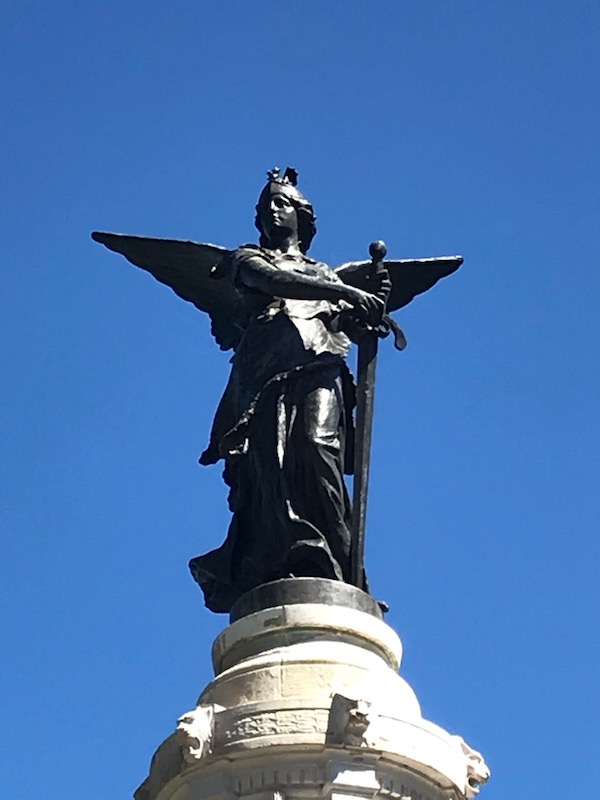
The Eglise Saint Jacques has an interesting-looking tower so that from a distance, it doesn't really look like a normal church. The church dates back to 1245 when James I of Mallora decided to have a church built outside of the city walls. The marble entrance is actually a 12th century door that was removed from another church and moved here, and the tower is more recent ... only 1849.

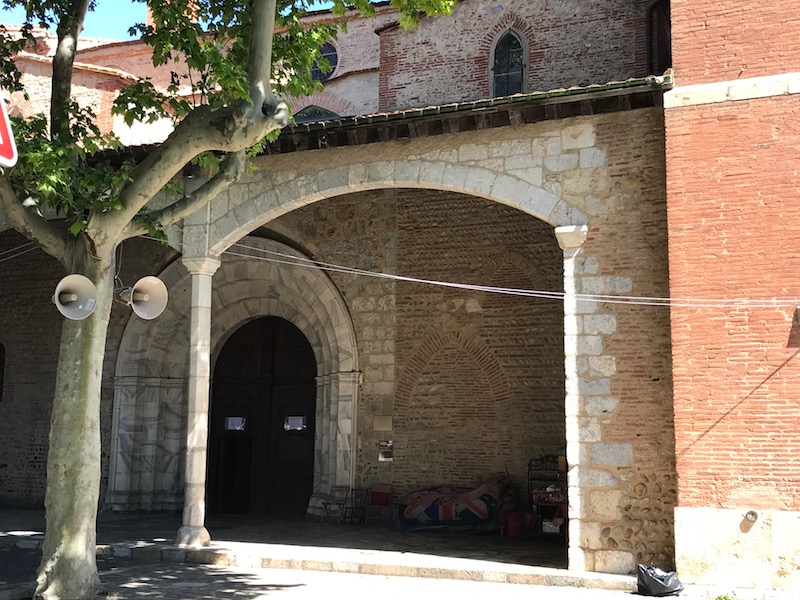
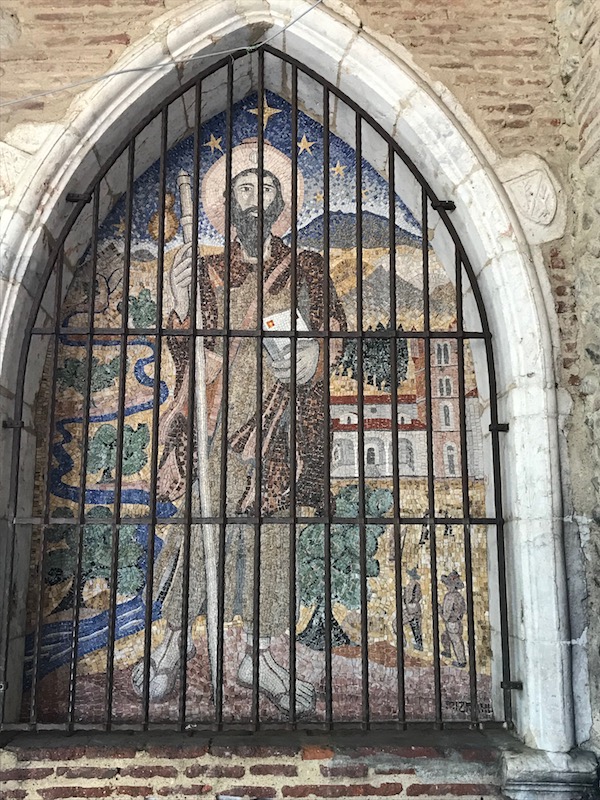
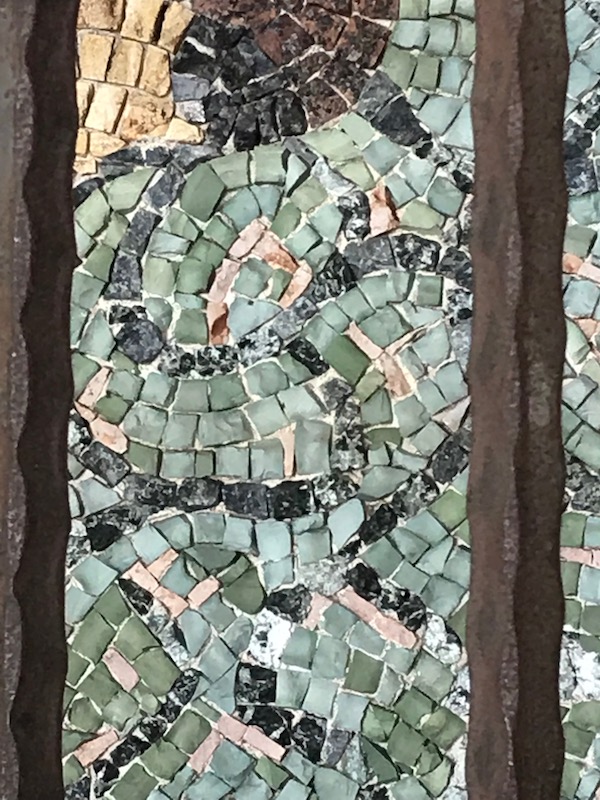
It is considered the most beautiful church in Perpignan due to the altarpiece of Notre-Dame de l'Esperance (circa 1480-1490) and the various sculptures and paintings. Most of the altarpieces painted and gilded Baroque pieces from the 17th century. But it also has some nice stained glass.

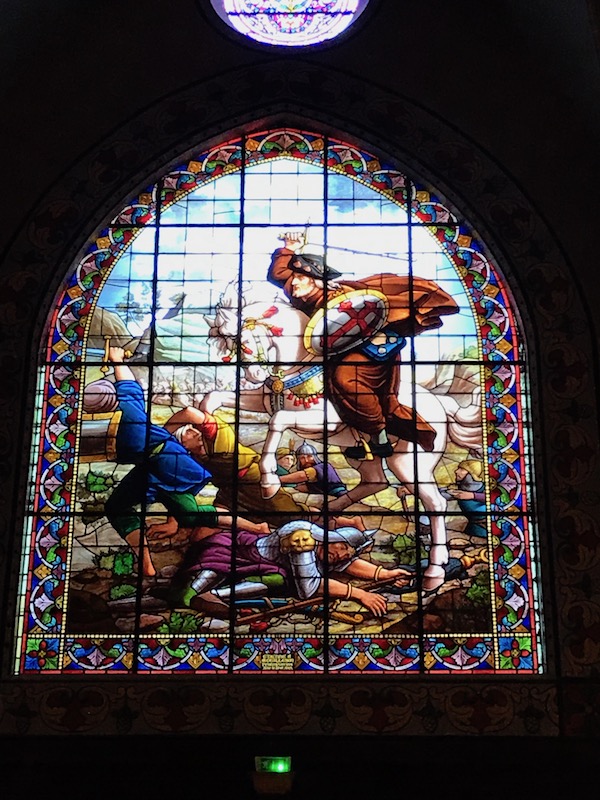

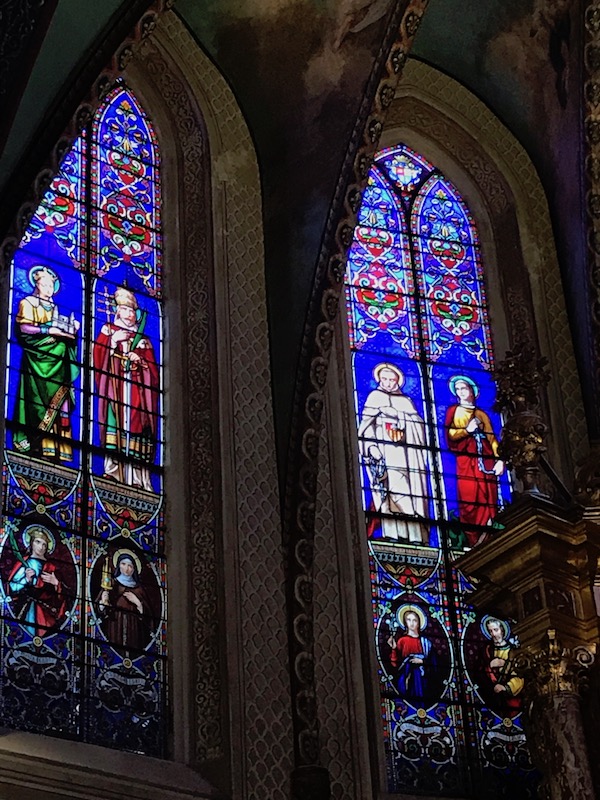

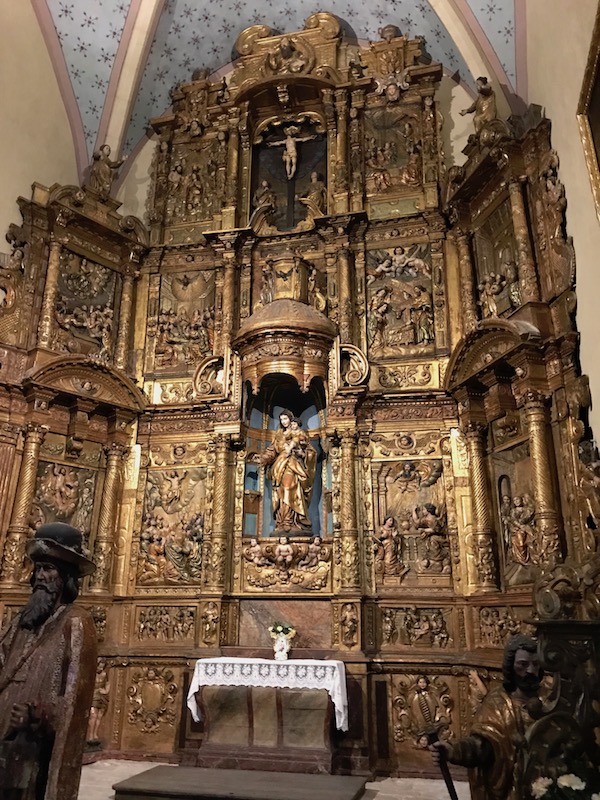
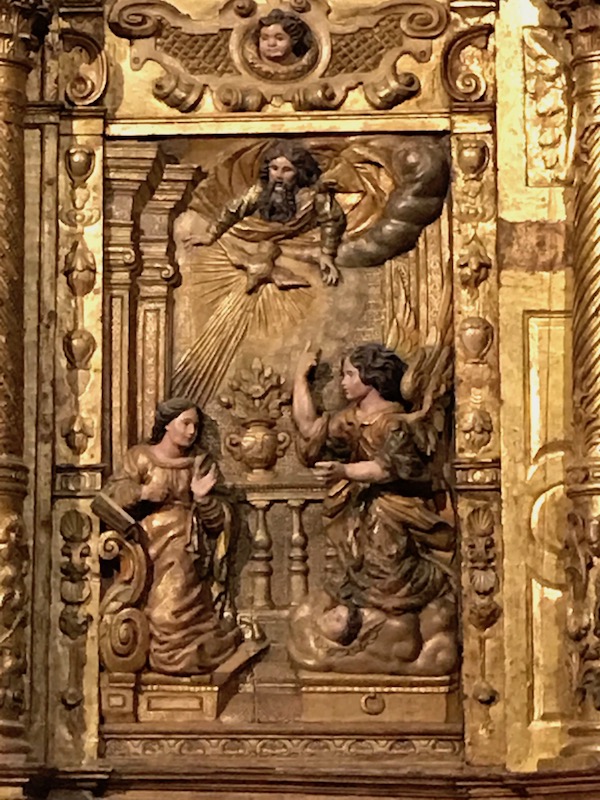
There is a nice status of Saint James including the signature scallop shell.

One interesting thing is that this really is 2 churches put together. In 1699, another church was basically built attached to it and eventually, they were combined. This is the altar of that other church, which is for the Sanch Confraternity, that was recently renovated.

The first of 2 "bourgeois"houses, the Hotel Pams was bought in 1852 by the son of the founder of the JOB cigarette paper company (you will see the name "Job" in a few pictures). He later purchased the adjoining lots and built a factory building and a lovely courtyard/garden. After his death, it passed to his daughter and her husband, Jules Pams, where the house gets its current name. They did a grand renovation to transform it into the veritable masterpiece that it is now. Interestingly enough, I have no pictures of the exterior :-). As you enter, you go into basically a 3-story covered area with artwork all the way to the ceiling.
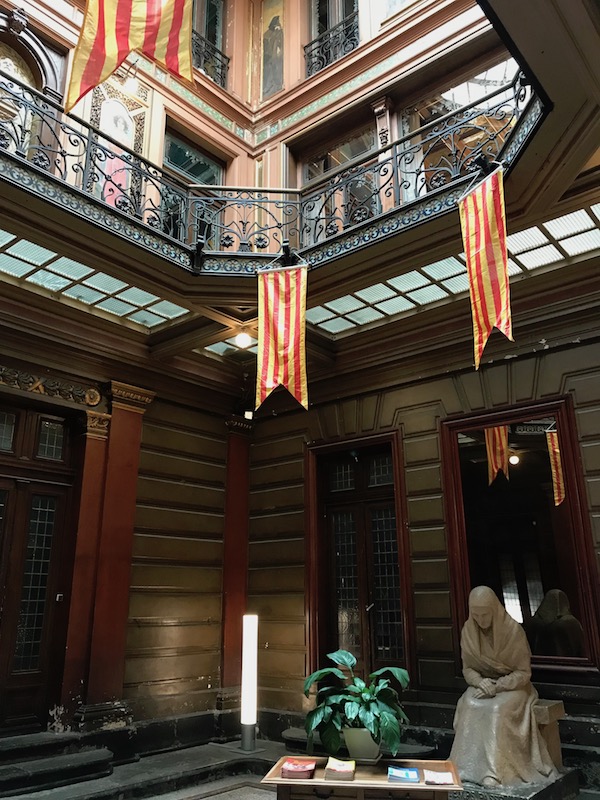

Then you turn to get a look at the grand staircase. It looks like pink marble, but it is actually onyx and stucco that imitates pink marble. All the way up are paintings on every wall.
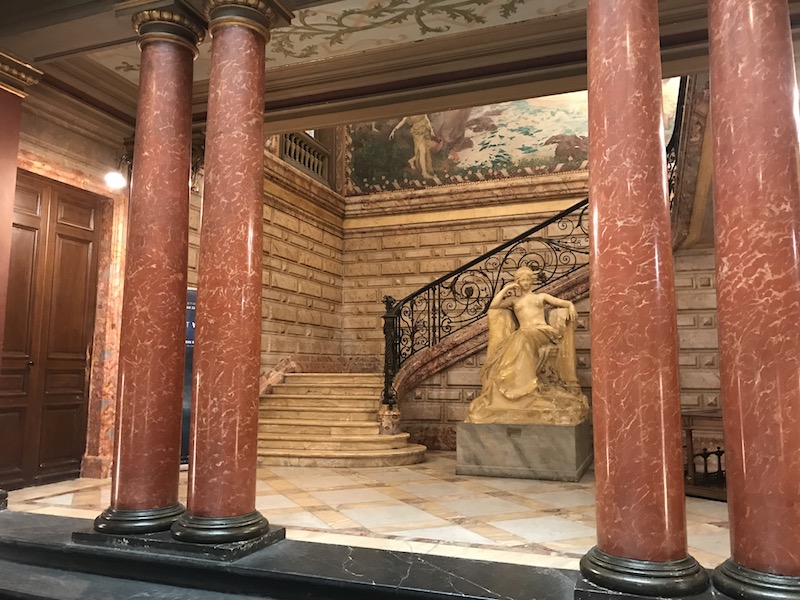

Almost every inch of wall is covered by decorative paintings as you go up the stairs and continue into the landing area. Then going through a few rooms, grand fireplaces ..
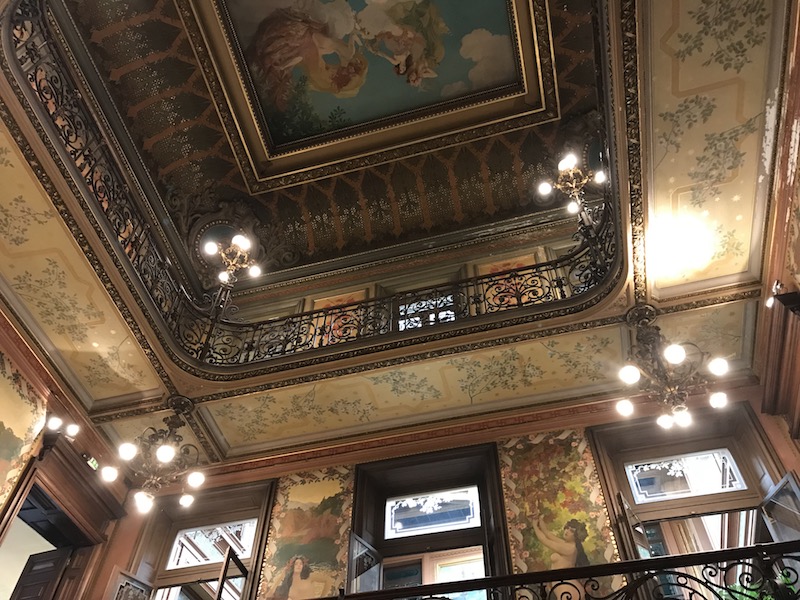
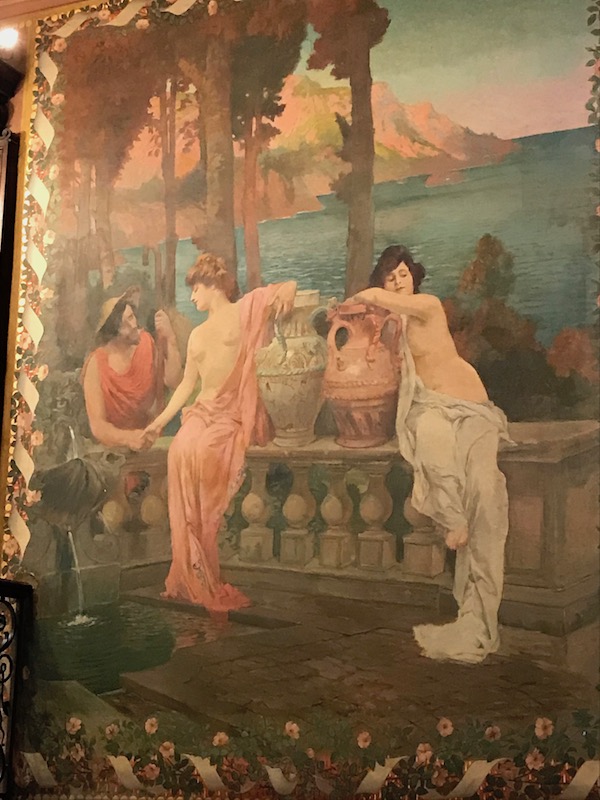
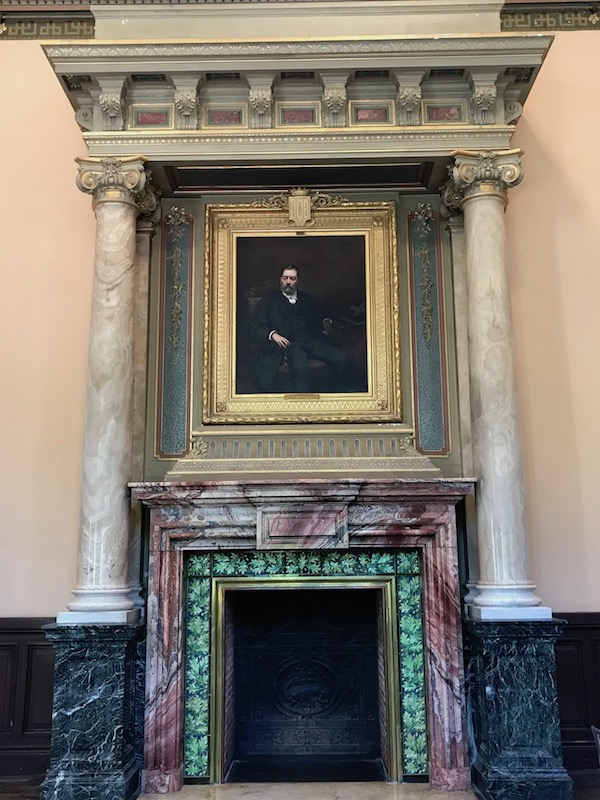
I mentioned the factory that was added, which is this glass and metal structure with the JOB logo in a few different places.
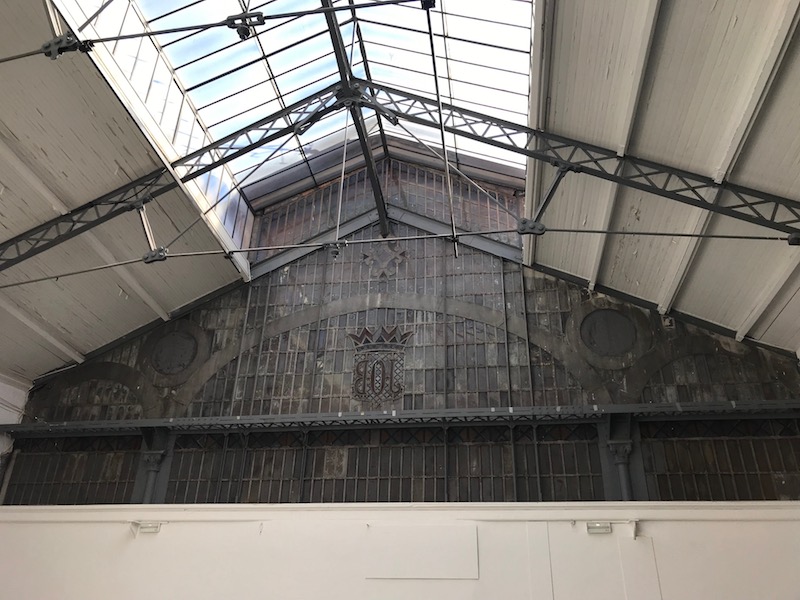
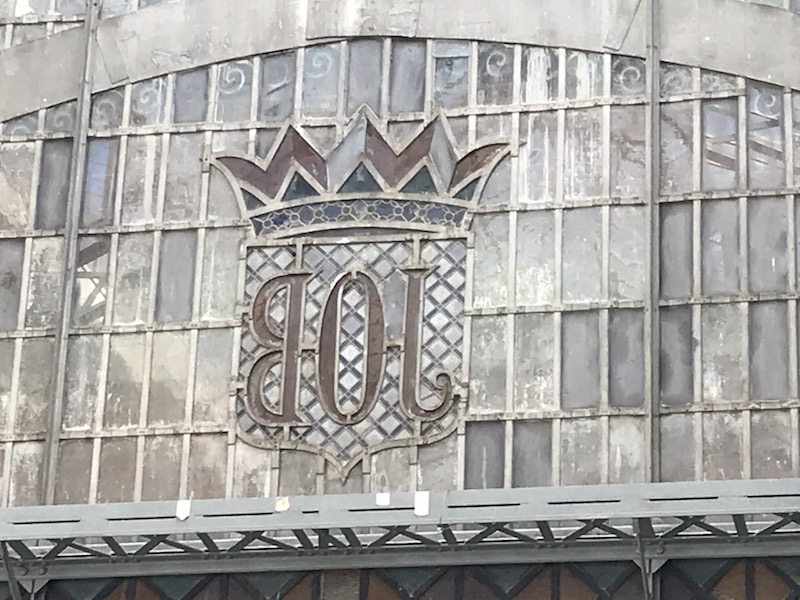
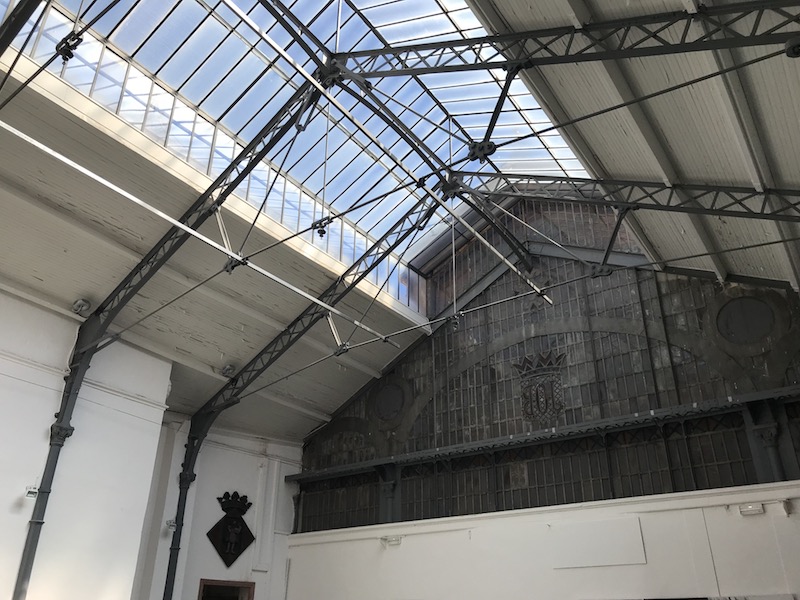
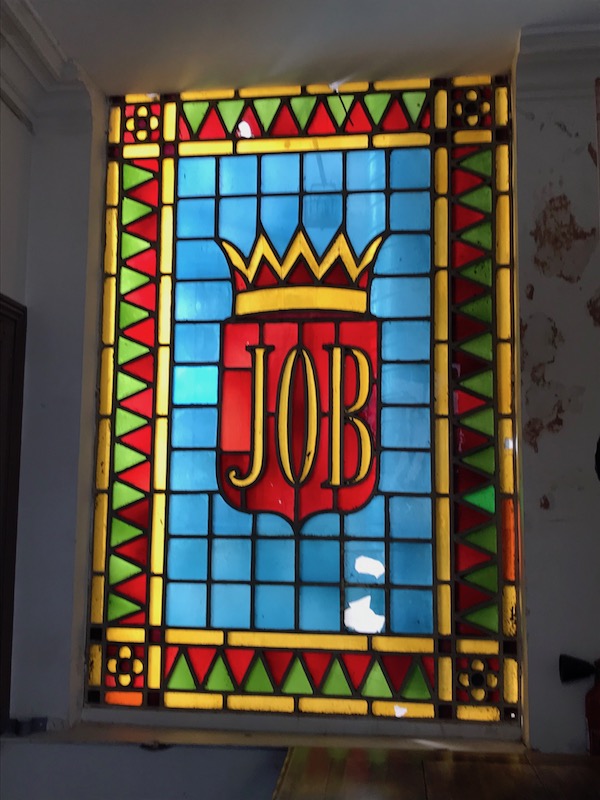
And then the interior garden courtyard, which shows the intricate architecture with the grand columns and sculptures.
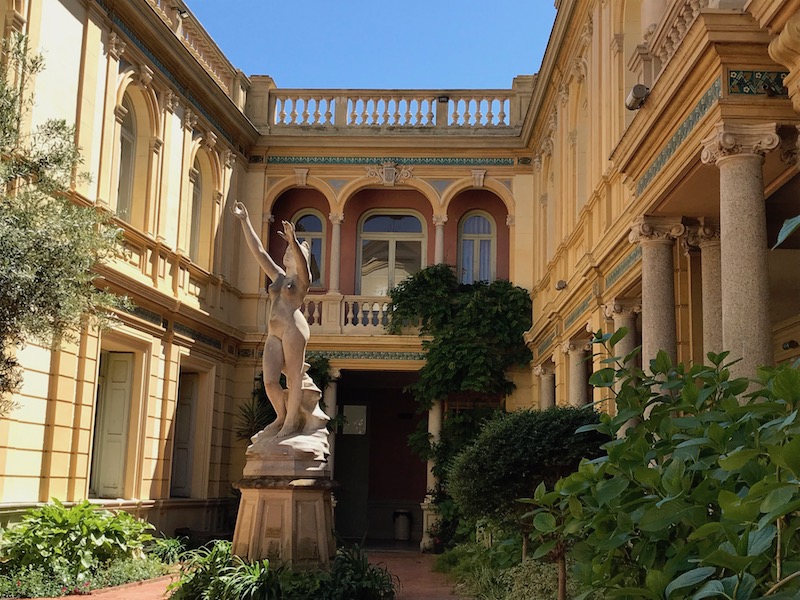
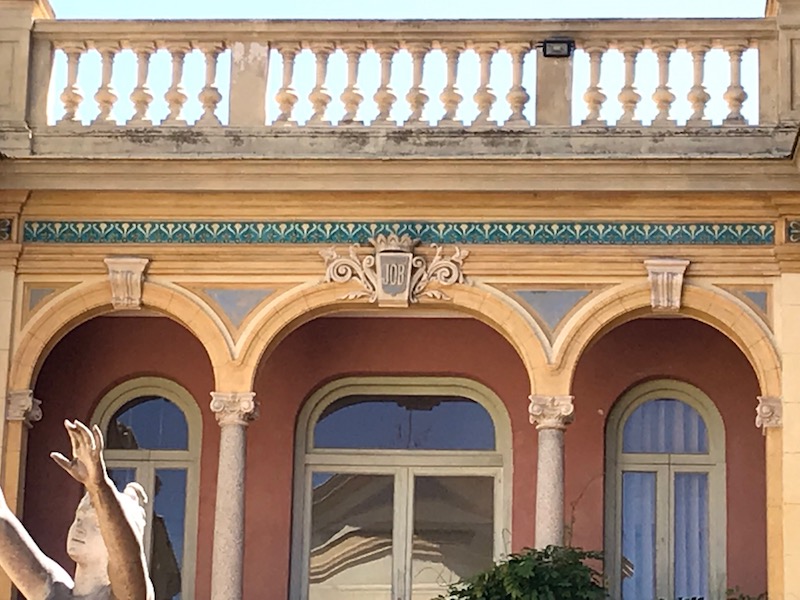
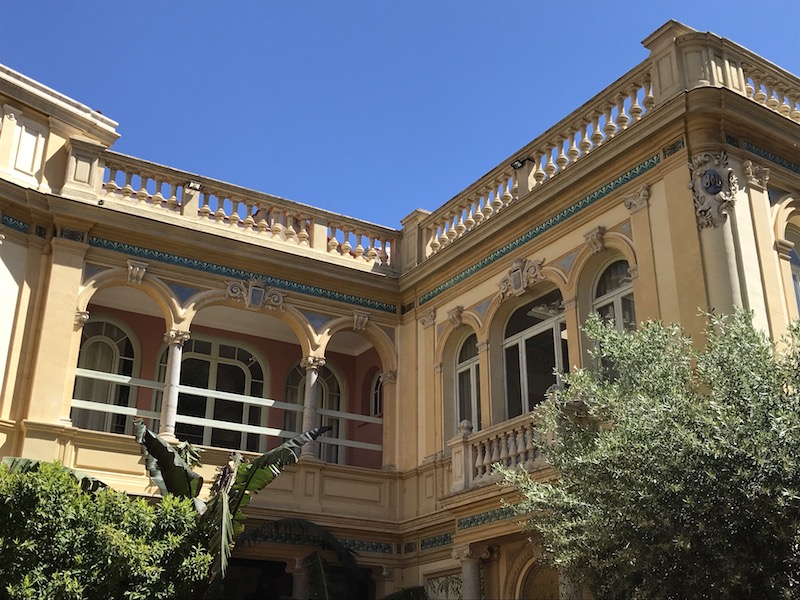
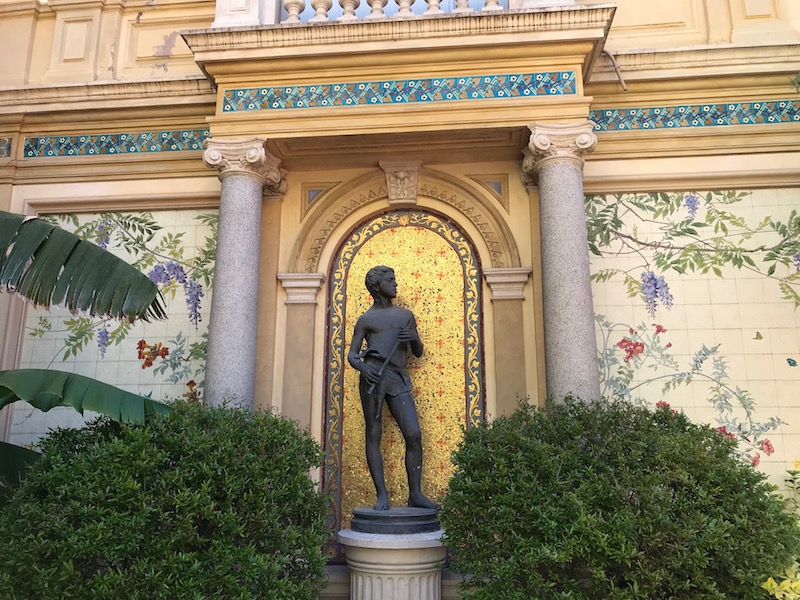
Another house, this one called Casa Xanxo. I must admit, while the outside is interesting, the interior was quite a bit of a let-down after the Hotel Pams. The house was built in 1508 by a rich cloth trader and is one of the only gothic houses remaining in Perpignan. The decoration on the front includes a sculpted frieze that represents the seven deadly sins and hell, with grotesque animals and a skull here and there.

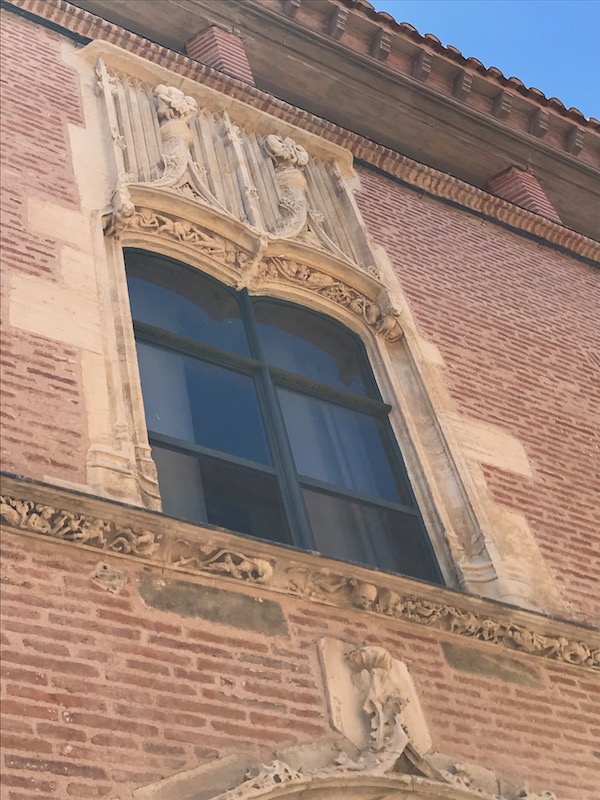
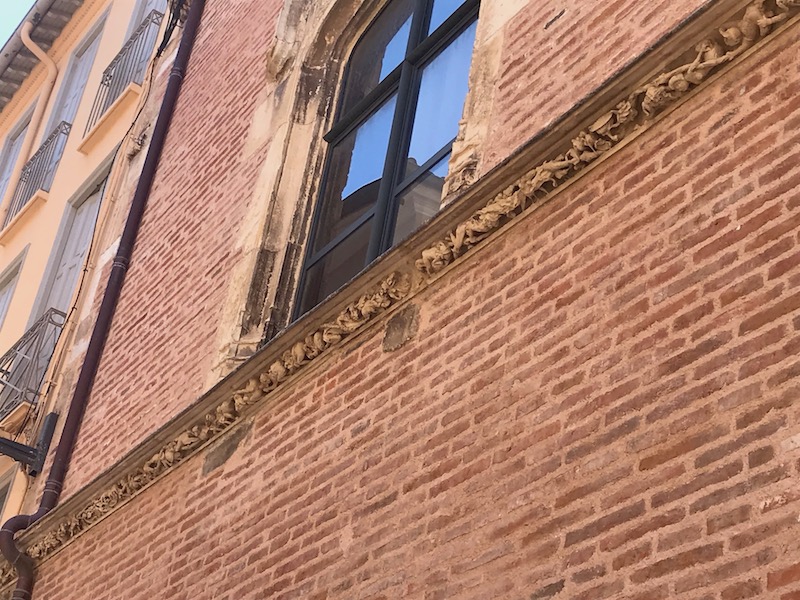
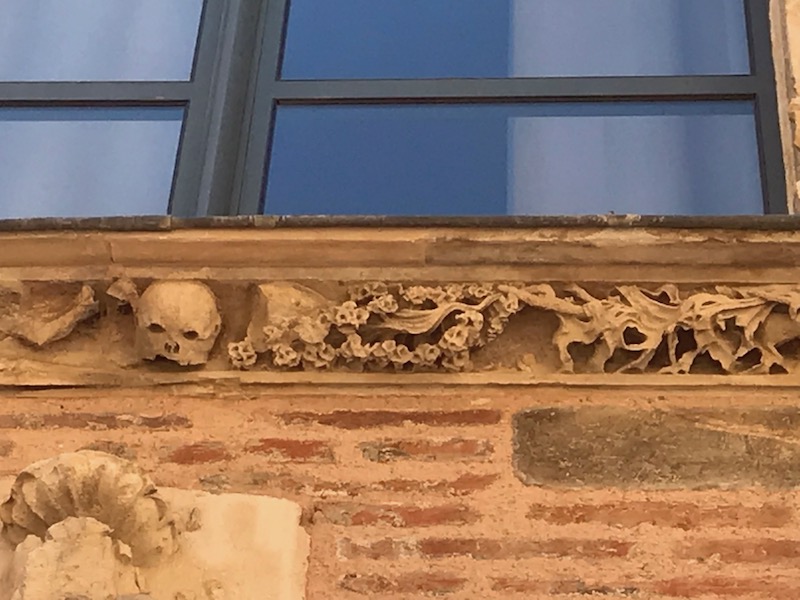

The first floor seemed to be for the business, with carvings around the first door and carved marbled around the second.
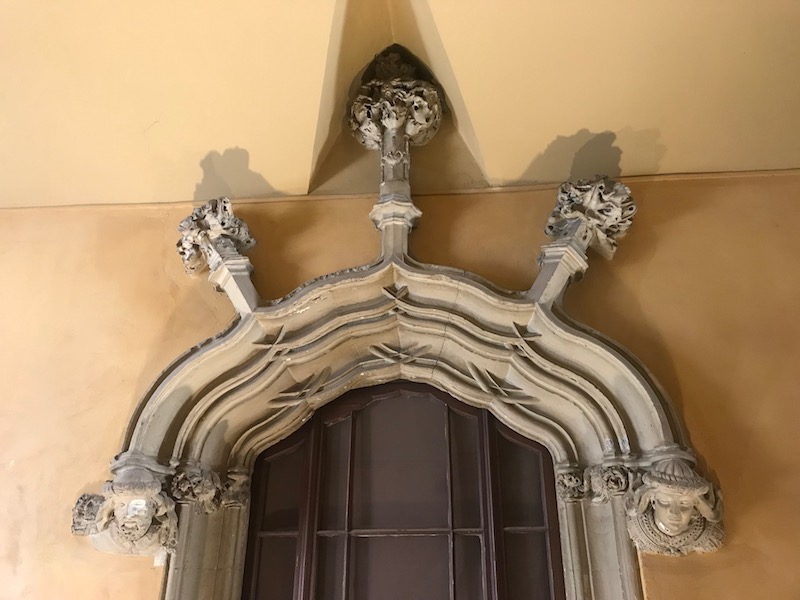
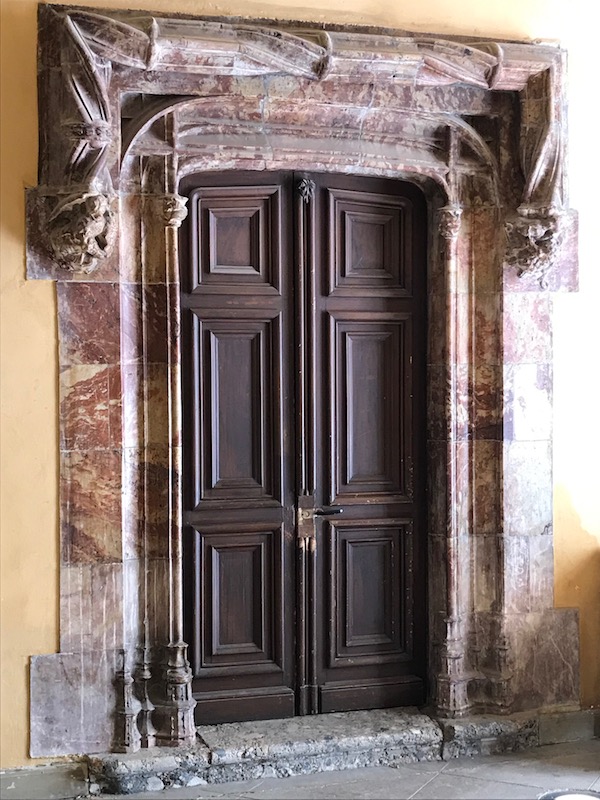
We headed up the stairs to see a few things, although, as I mentioned, the interior was no match for the previous house we saw.



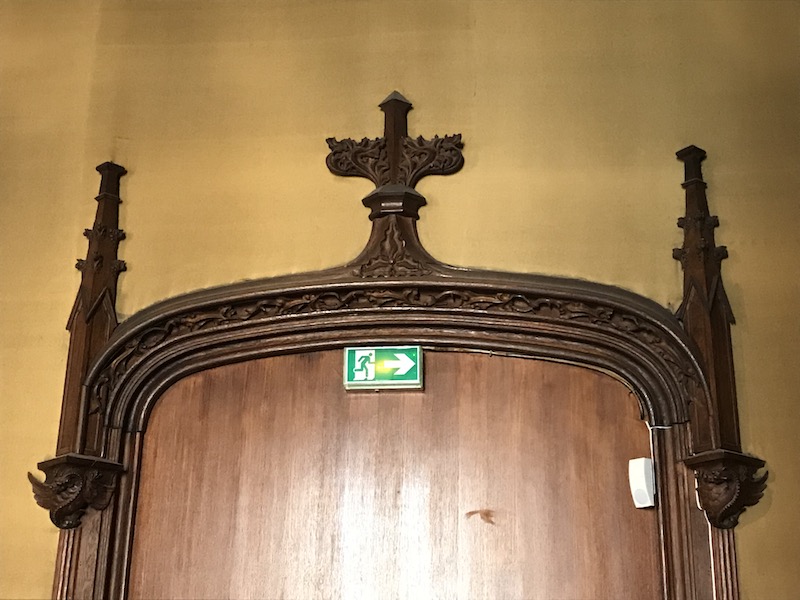

The Castillet cinema was completed in 1911, is decorated with sculpted elements and polychrome earthenware friezes in an Art Nouveau style. Many of the sculptures were done by sculptor Alexandre Guenot from Toulouse.
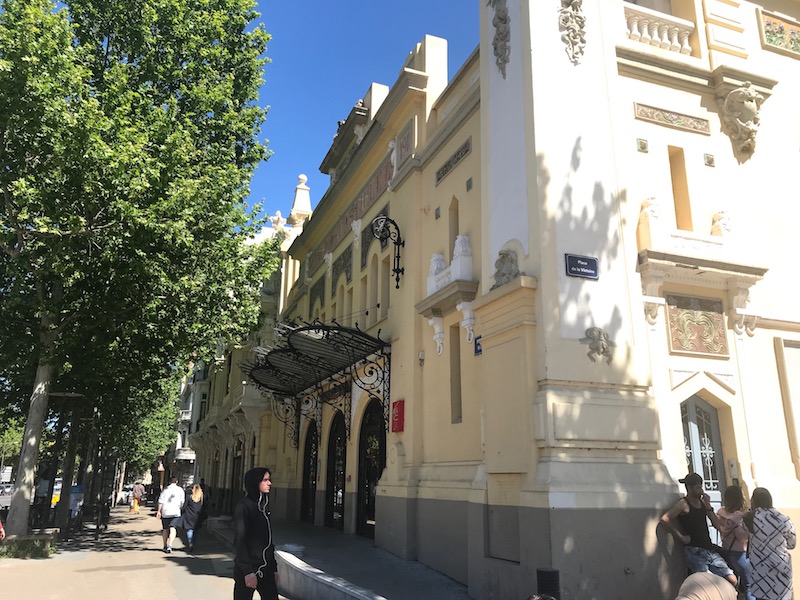


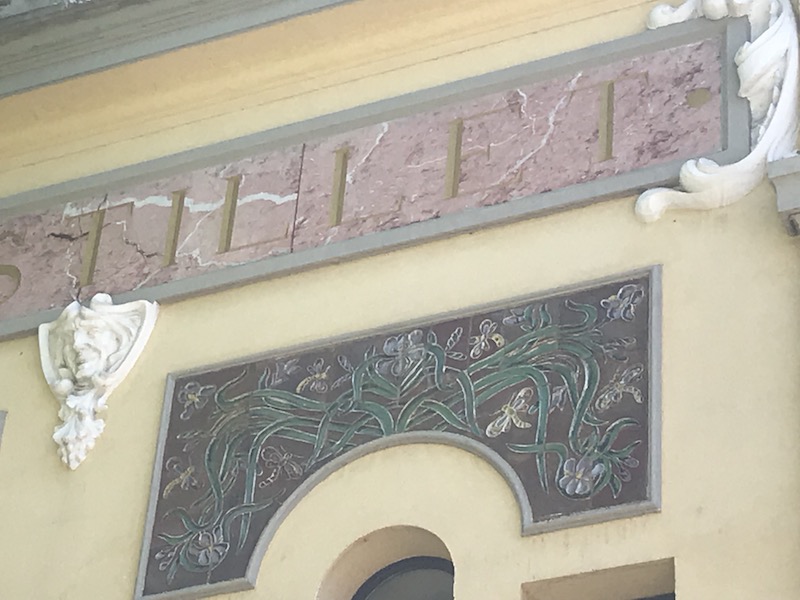
Earlier, you saw the Hotel Pams, which was owned by the wealthy Job family. This fountain, with its 3 mermaids holding up a large marble bowl, is in Place Bardou Job which is named for Pierre Bardou-Job who took over the company in 1853. This is very much like the 3 mermaid fountain in Place de la Trinité in Toulouse.

Now somewhat of a mall, this lovely building was built between 1905 and 1907 to house the department store "Aux Dames de France". With wide openings and metallic elements, the design is characteristic of commercial architecture during the Belle Epoque. You can still see the name of the store on the building, as well as the date 1907.
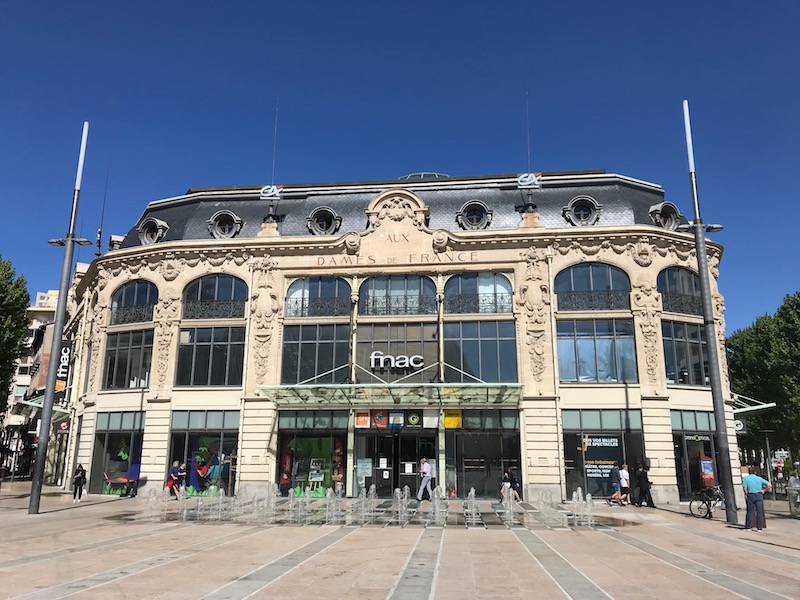
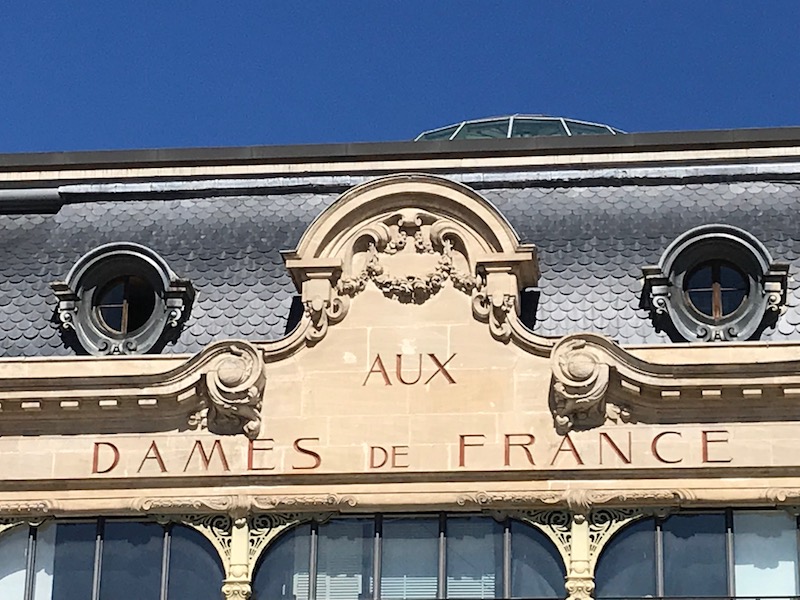
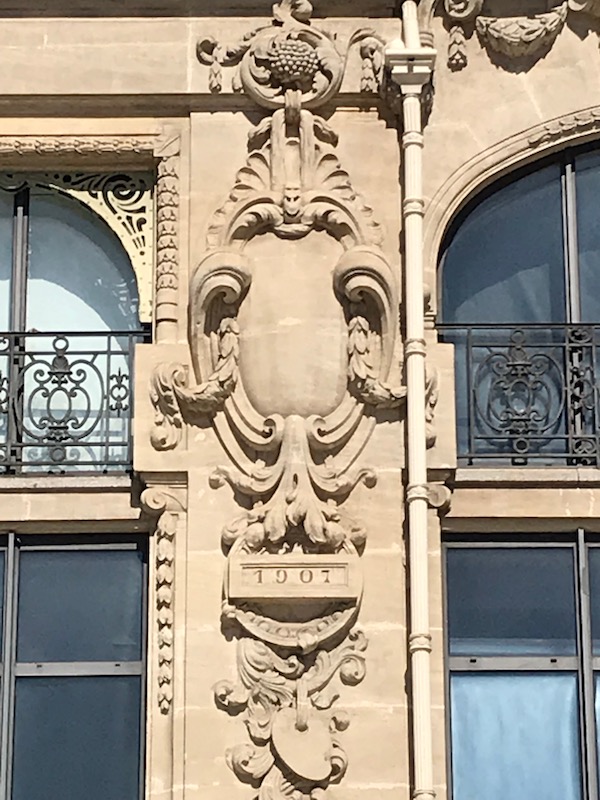
As you can see from these pictures, it was another sunny day when we headed back to Toulouse, and you can see the snow on the Pyrenees in the background.

